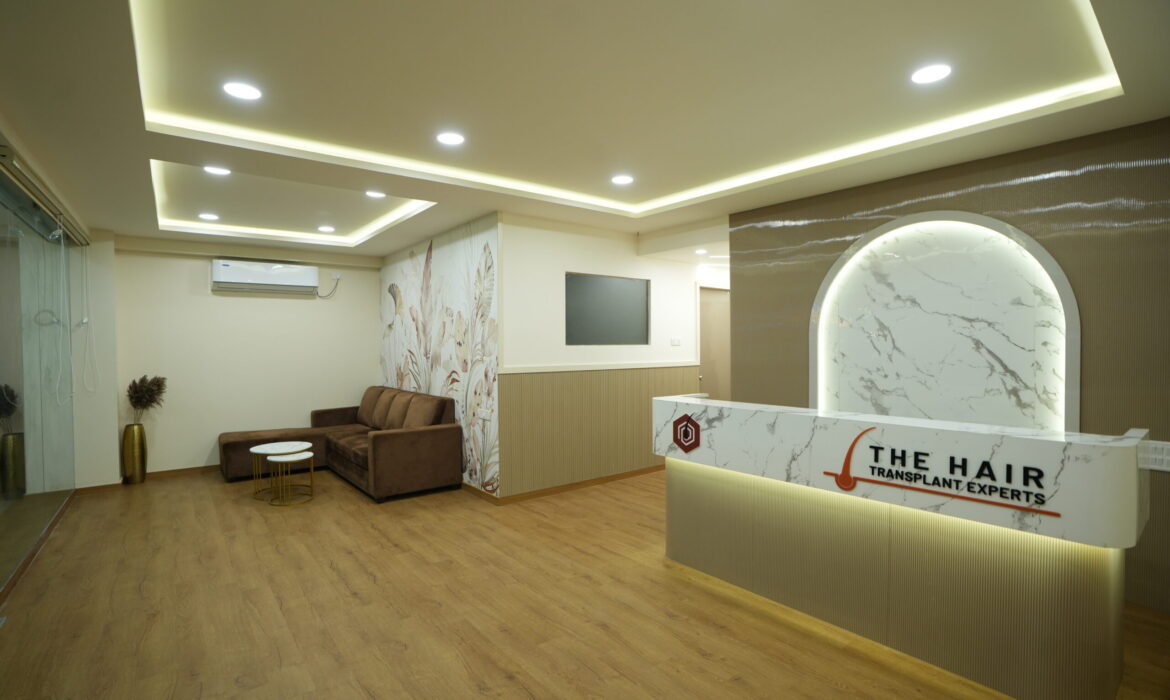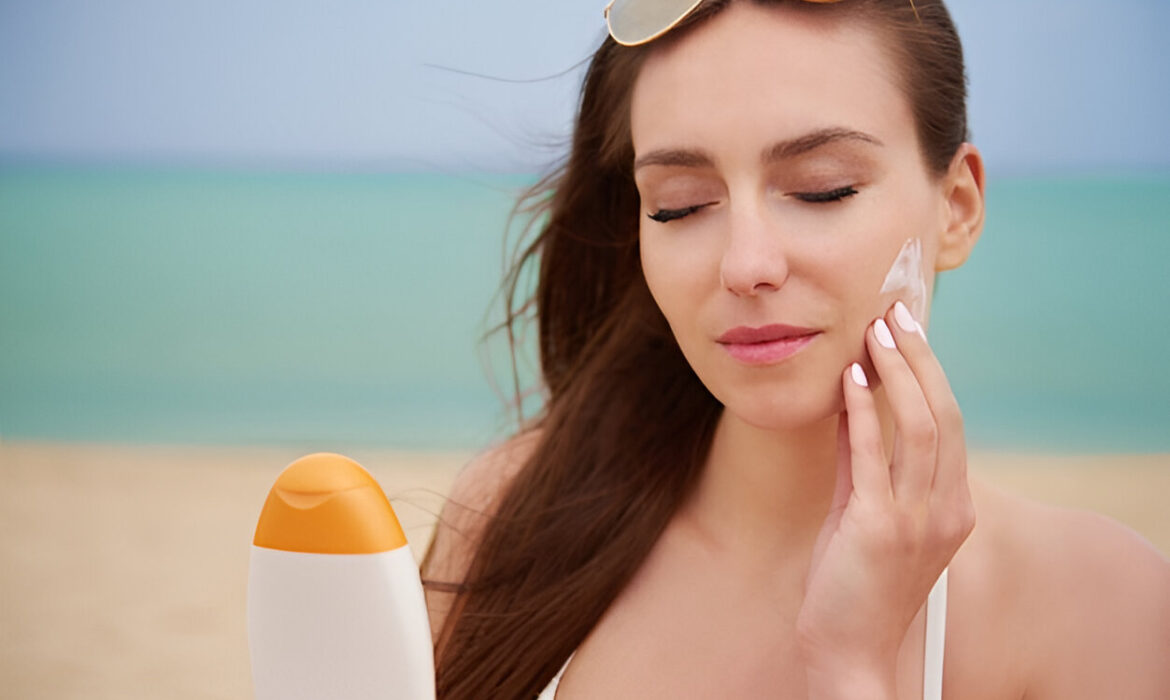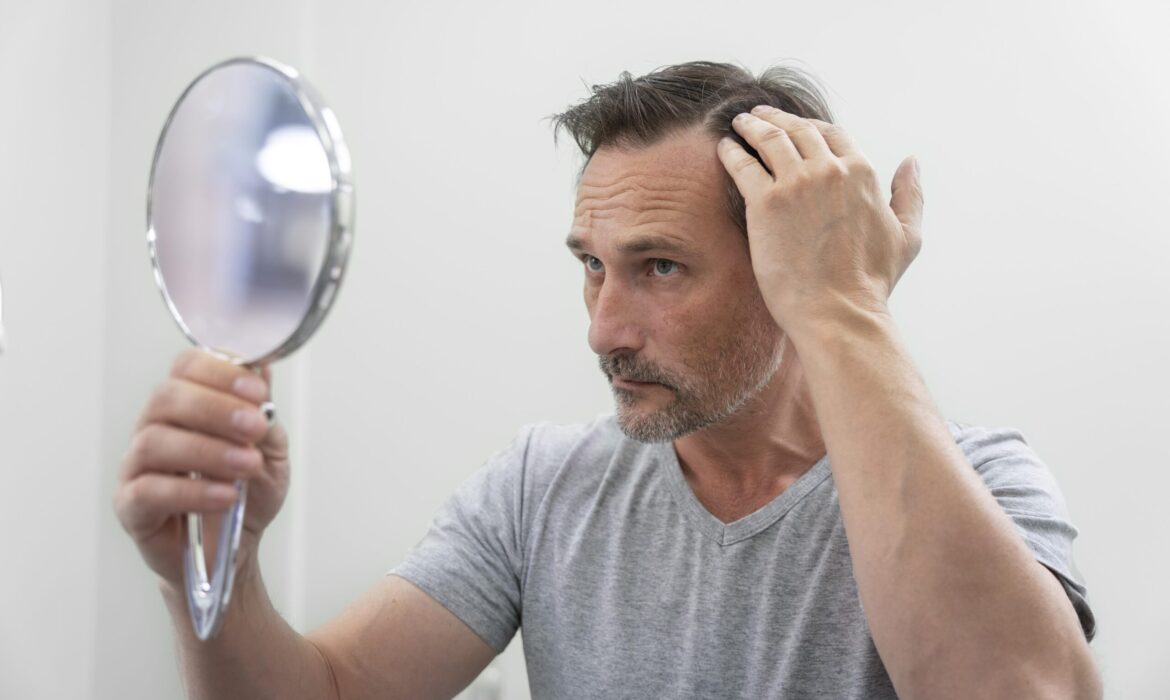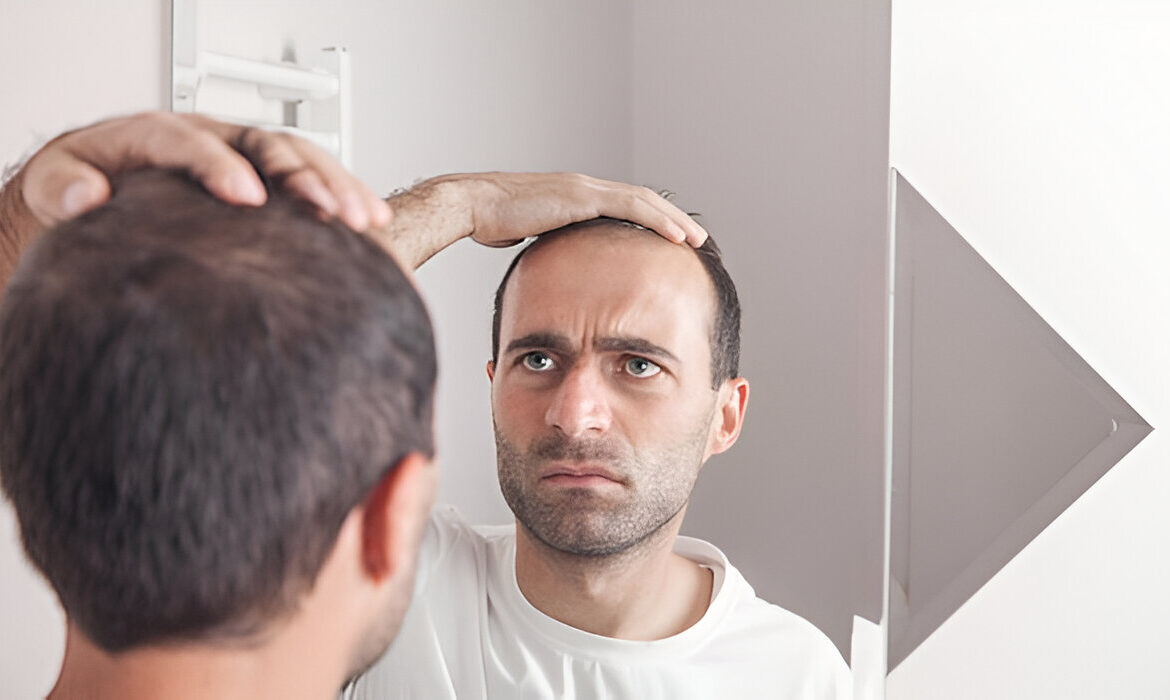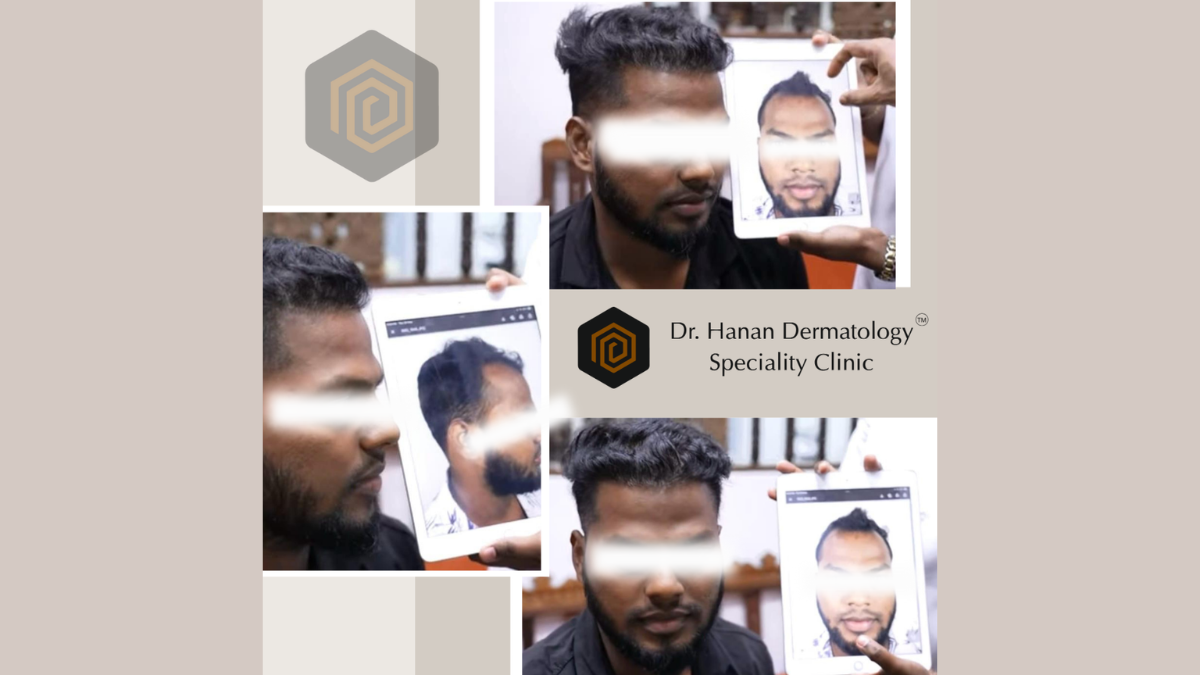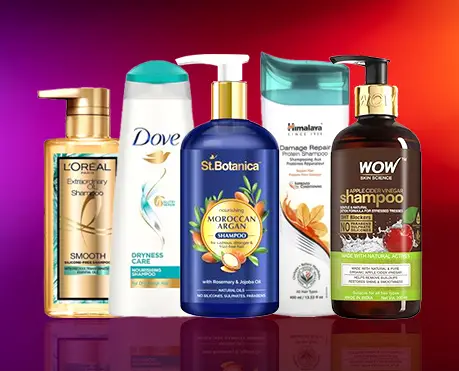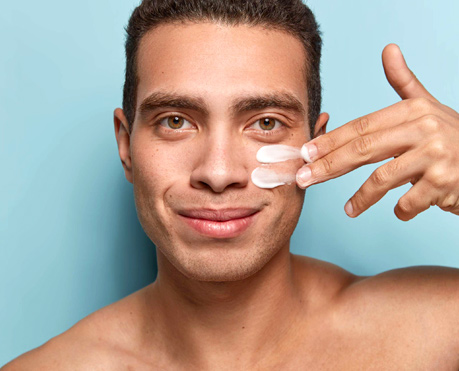Hair Transplant in Chennai
Hair Transplant in Chennai
Get the best hair transplant in Chennai at Dr. Hanan Clinic. Natural results with FUE, FUT & PRP. Book your free consultation today
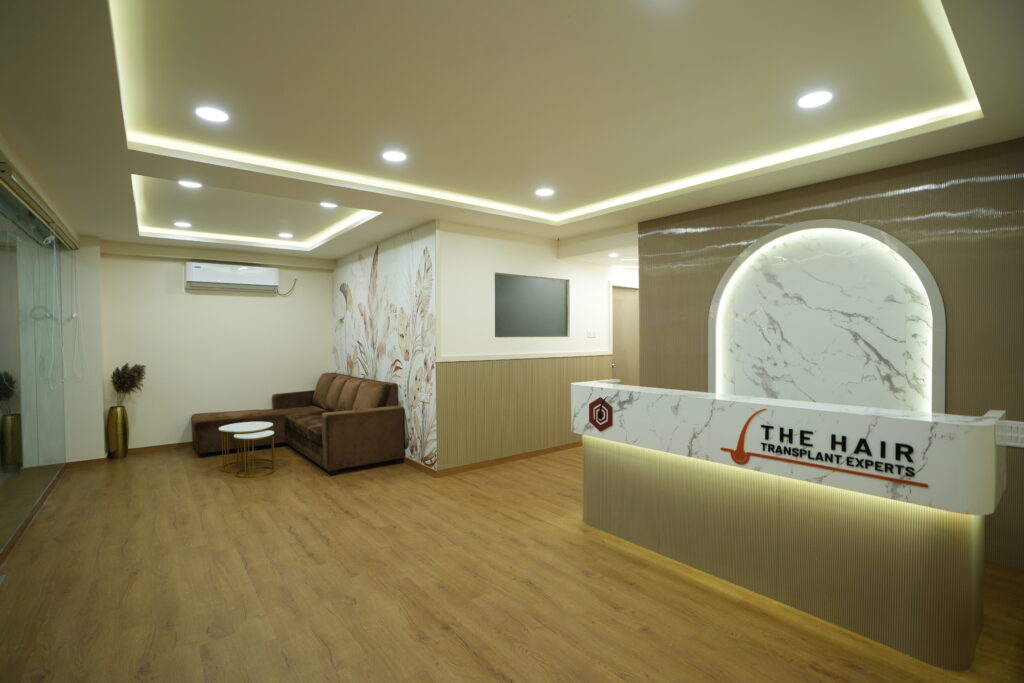
Are you struggling with hair loss and looking for a permanent solution in Chennai? There may be a hair transplant answer. In Dr. Hanan Dermatology Specialty and Trichology Clinic, we provide advance technology for hair restoration treatment that correspond to safe, effective and your unique hair goals.
Why Choose Hair Transplant in Chennai?
Hair loss can affect your confidence, presence and even your emotional good. Chennai, a medical hub in South India, is home to some of the best dermatology clinics, and Dr. Hanan’s clinic stands with its expertise, technology and personal approach.
Benefits of Hair Transplant:
Permanent solution
Natural looking results with your own hair follicle
Increases self -esteem and confidence
Minimum invasive procedure with quick recovery
About Dr. Hanan Dermatology Speciality and Trichology Clinic
Located in Padur, Chennai, Dr. Hanan’s clinic is a major destination for dermatology and hair care. With 801+ Google reviews and a rising reputation, the clinic hair transplant specializes in surgery, PRP therapy, dermatological treatment and beauty processes.
What makes us the best hair transplant clinic in Chennai?
Expert trichologist: led by experienced professionals with a passion for results.
Advanced Technology: We use the latest devices such as FUE (follicular unit extraction) for accurate and natural results.
Personal Consultation: We evaluate your scalp and suggest the most effective transplant Plan.
Safe and clean environment: Our clinic follows strict sterilization and safety protocols.
Transparent pricing: no hidden fee. Everything is clearly explained before the procedure.
Types of Hair Transplant Procedures We Offer
At Dr. Hanan Dermatology Speciality and Trichology Clinic, we provide a wide range of hair restoration techniques to suit every individual’s hair loss condition. Our treatments are scientifically backed, minimally invasive, and deliver long-lasting, natural results.
1. FUE – Follicular Unit Extraction
FUE is one of the most advanced and popular hair transplant methods. In this technique, individual hair follicles are extracted from the donor area (usually behind the skull) and transplanted into bald or hair thinning areas.
Benefits:
No stitches or visible scarring
Quick recovery
Ideal for both men and women
Natural-looking hairline
2. FUT – Follicular Unit Transplantation
Also known as the strip method, FUT involves removing a small strip of tissue from the donor area and dissecting it in individual follicular units for transplantation.
Benefits:
Cost-effective for large bald areas
Higher follicle survival rate
Recommended for patients with advanced hair loss
3. PRP – Platelet-Rich Plasma Therapy
PRP therapy is a non-surgical hair restoration method that involves injecting your own platelet-rich plasma in the scalp to encourage hair growth and improve hair thickness.
Benefits:
No surgery or downtime
Enhances results after hair transplant
Reduces hair fall
Boosts scalp health
4. Beard and Mustache Transplants
Dealing with uneven or sparse facial hair? Our advanced hair transplant techniques can restore a thicker, natural-looking beard and mustache.
Benefits:
Natural growth patterns
Improves density and symmetry
Suitable for scar coverage
5. Eyebrow Hair Transplant
For patients with thin or overplucked eyebrows, we offer eyebrow hair implants that restore the volume and shape using their own hair
Benefits:
Fuller, natural brows
Permanent solution
Artistic shaping to suit your face
6.Sapphire Pen Hair Transplant
This advanced method uses sapphire blades instead of metal ones to create recipient sites, reduce trauma and ensure rapid healing process.
Benefits:
Low tissue damage and minimum scars
Rapid recovery
High graft survival rate
More natural looking hair density
7. DHI – Direct Hair Implantation
DHI is a revolutionary hair transplant method that involves transplanting hair in the scalp directly without the need for incisions or channel creation.
Benefits:
High graft survival rate
No stitches or marks
Rapid recovery time
Accurate control over hair placement and direction
Real Results, Real Stories
Hundreds of patients in Chennai have trusted Dr. Hanan Dermatology Speciality and Trichology Clinic for their hair restoration journey. From receding hairlines to full coverage transformations, our before-and-after results speak volumes.

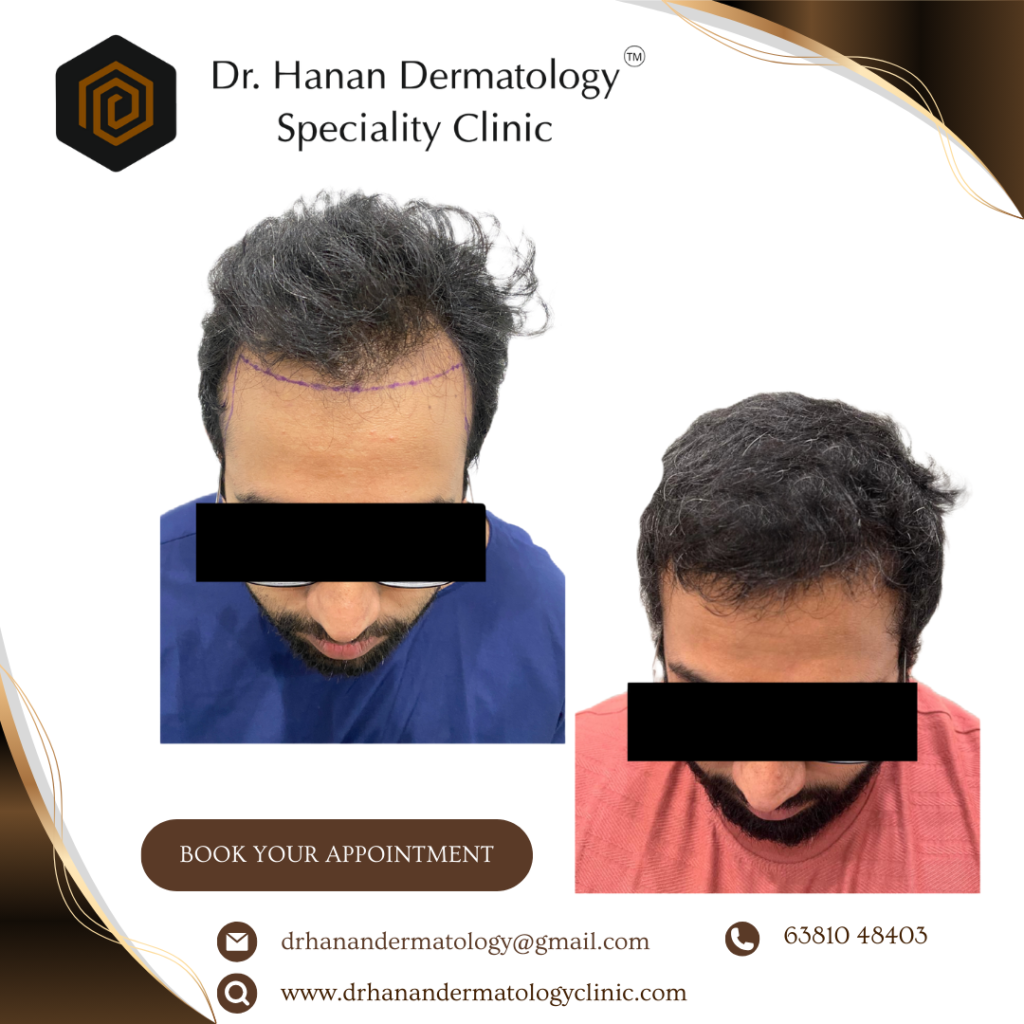
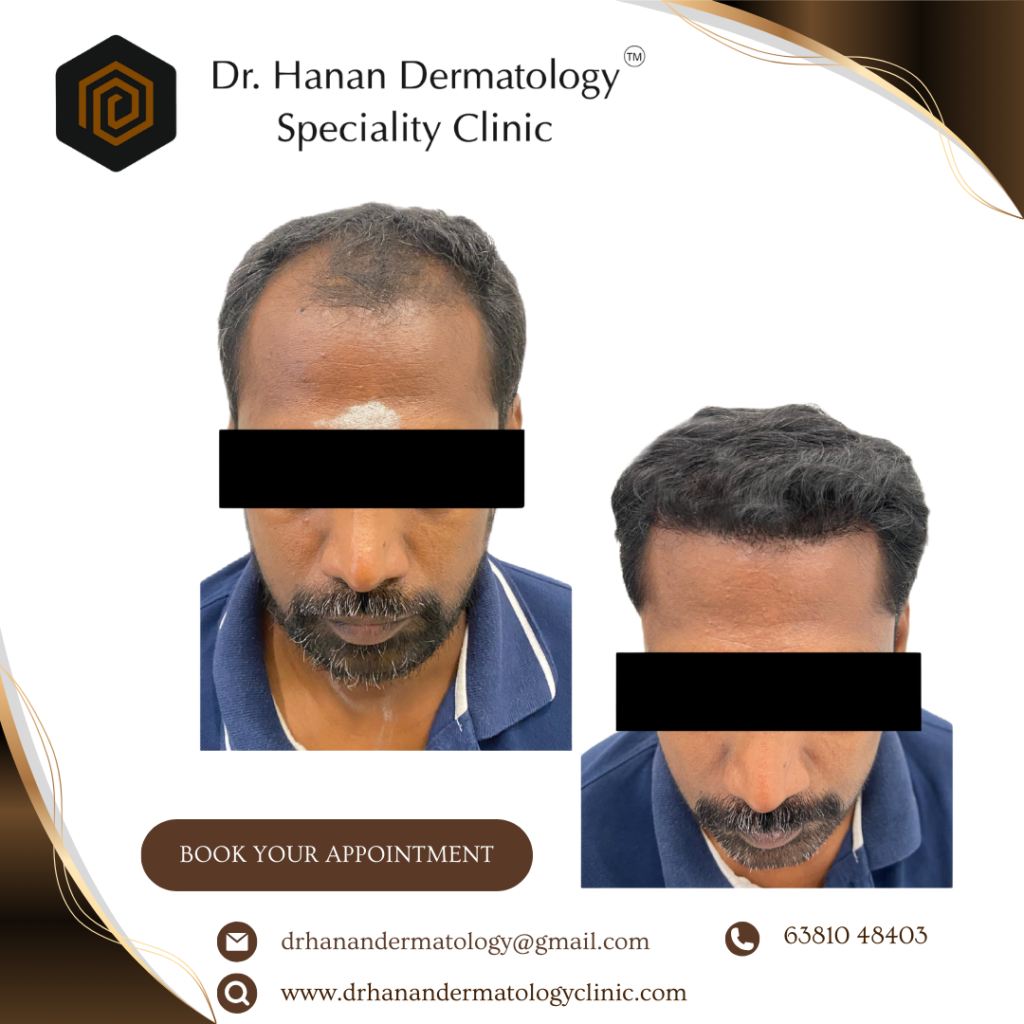


What to Expect – Your Hair Transplant Journey
Initial Consultation
Our experts analyze your scalp and medical history to make a customized plan.
Procedure Day
You will undergo a painless, outpatient surgery using advanced equipment.
Recovery Phase
Quick recovery with minimal downtime. Our team offers guidance after fully care.
Hair Growth Timeline
Visual results begin in 3-4 months. Full hair growth is seen within 9–12 months.
Book Your Consultation Today!
Conclusion:
Hair transplant is no longer a luxury – this is necessary to deal with hair loss. Expert care, personal solutions, and with advanced techniques, Dr. in Chennai. Hanan Dermatology Specialty and Trichology Clinic is your place for reliable, natural looking hair restoration.
Table of Contents
Summer Skin Care Routine for All Skin Types
Summer Skin Care Routine for All Skin Types
Follow the best summer skin care routine for all skin types to stay glowing, fresh, and protected all season long.
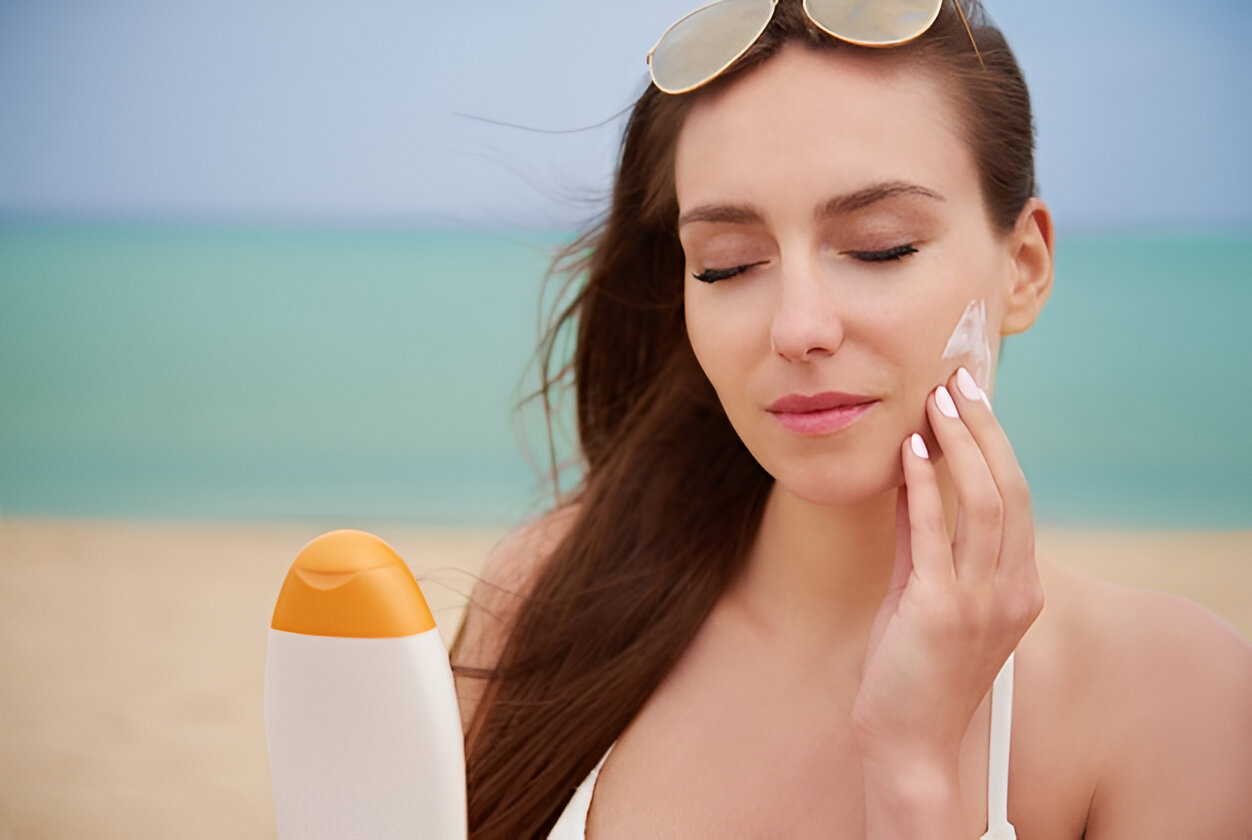
Summer is the season of sunshine, beach trips and vibrant energy – but it can also be harsh on your skin. With an increase in contact with UV rays, heat, sweat and pollution, your skin needs additional attention during these warm months. Whether you have oily, dry, sensitive, or combination skin, a tailored skin care routine for summer can help you maintain a healthy, glowing skin.
In this blog, we break the routine of the right summer skin care routine for all types of skin, packed with dermatologist-approved tips to defeat heat and prevent breakouts, pigmentation and dullness.
Why Is Summer Skin Care Important?
The intense heat and humidity in summer can lead to:
1. Excess sebum (oil) production
2. Clogged pores and acne
3. Sunburn and tanning
4. Dehydration and dullness
5. Uneven skin tone and pigmentation
Adopting the right summer skin care routine helps protect your skin barrier, keeps you hydrated, and boosts your natural glow while preventing long-term sun damage.
Summer Skin Care Routine for Oily Skin
Oily skin can be greasier in summer, causing frequent breakouts. Here is how to manage it:
1. Use a sulfate-free, oil-control cleanser twice a soft foaming cleanser day.
2. Choose oil free moisturizer-pelted, gel-based moisturizer, Ingredients such as hyaluronic acid and niacinamide.
3. non-comedogenic sunscreen: Use a matte-finish SPF 50 sunscreen to prevent oil build-up and tanning.
4. Blotting papers and clay masks – Use once a week to absorb excess oil and detoxify pores.
Pro Tip: Avoid over-washing your face. It can trigger more oil production!
Summer Skin Care Routine for Dry Skin
Dry skin gets dehydrated even faster in summer. Stay supple with this regimen:
1. Cream-Based Cleanser – Avoid foaming cleansers that strip your skin of natural oils.
2. Hydrating Toner – Look for rose water or glycerin-based toners to prep your skin.
3. Deep Moisturizer – Choose moisturizers with ceramides, shea butter, or squalene.
4. SPF with Moisturizing Base – Go for sunscreen that doubles as a moisturizer.
Pro Tip: Use a humidifier at night to keep your skin moist while you sleep.
Summer Skin Care Routine for Sensitive Skin
Sensitive skin requires a gentle, minimalistic approach during summer:
1. Fragrance-Free Cleanser – Use hypoallergenic products that won’t trigger irritation.
2. Aloe Vera Gel or Thermal Water Spray – Instantly soothes inflammation or redness.
3. Minimal Ingredients Moisturizer – Avoid alcohol and synthetic additives.
4. Mineral Sunscreen (Zinc Oxide) – Offers broad-spectrum UV protection without irritation.
Pro Tip: Always do a patch test before trying any new product.
Summer Skin Care Routine for Combination Skin
Combination skin can be tricky—oily in the T-zone and dry elsewhere. Here’s how to balance it:
1. Balancing Cleanser – Use a gentle foaming cleanser to target oily areas.
2. Dual Moisturizers – Apply gel-based moisturizers to the T-zone and creamier ones to dry areas.
4. Lightweight Sunscreen – Choose a water-based, non-greasy SPF 30+.
5. Weekly Exfoliation – Use a mild AHA or BHA exfoliant to unclog pores and even out texture.
Pro Tip: Multimasking (using different masks on different areas) works wonders.
Extra Tips for Glowing Skin All Summer Long
1. Drink at least 2.5–3 liters of water daily
2. Eat seasonal fruits like watermelon, berries, and cucumber
3. Avoid heavy makeup—opt for a tinted sunscreen or BB cream
4. Don’t forget your lips and under-eye area—use SPF lip balm and hydrating eye cream
5. Reapply sunscreen every 2–3 hours if you’re outdoors
Professional Help for Summer Skin Concerns
If you are struggling with acne, sunspot, or pigmentation, do not ignore it. At Dr. Hanan Dermatology Specialty and Trichology Clinic, our experts provide personal summer skin care treatment:
1. Hydrafacials for hydration and deep cleansing
2. Chemical peels to remove tan and dead skin cells
3. Laser treatments for pigmentation and dullness
4. Custom summer skin care plans for all skin types
Conclusion:
A proper skin care routine for summer is the best protection of your skin against heat, pollution and sun. By following the above tips based on your skin type and making healthy lifestyle changes, you can keep your skin fresh, bright and problem-free in summer.
For personal advice and advanced treatments. Book a consultation at Dr. Hanan Dermatology Specialty and Trichology Clinic, your reliable destination for all-season skin care.
Table of Contents
Sex After Hair Transplant: Does It Affect Your Results?
Sex After Hair Transplant: Does It Affect Your Results?
Sex after a hair transplant—does it affect results? Learn when it’s safe and what to avoid from the best hair transplant clinic in Chennai.
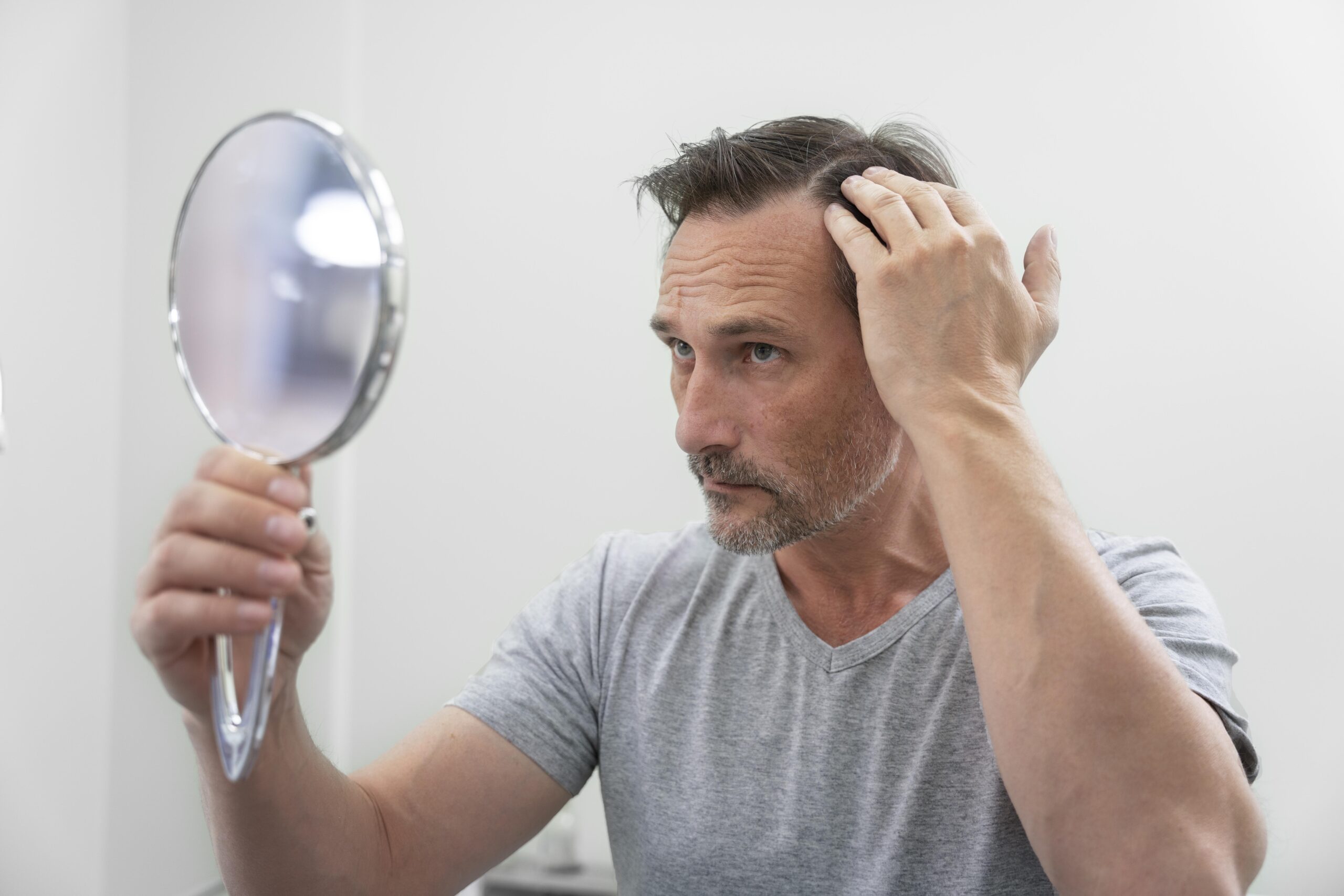
A hair transplant is a life -changing process that restores not only hair but also confidence. However, patients often worry about after surgery care, and a common question is: “Can I have sex after a hair transplant?”
While sex is a natural part of life, attachment to it even after a hair transplant can affect the healing process. In this blog, we will discuss how sexual activity can affect your results, when it is safe to resume, and the precautions you should take.
Can You Have Sex After a Hair Transplant?
The brief answer is: It is best to wait for at least 7-10 days.
After a hair transplant, new transplanted hair follicle is delicate. During this treatment period, excessive sweating, increase in heart rate, and can interfere with the physical pressure recovery process on the scalp.
While sex does not directly damage transplanted grafts, some factors related to sexual activity may cause risk
How Does Sex Affect Hair Transplant Recovery?
1. Sweating may increase the risk of infection
Those who have lost hair due to burns, accidents or surgery can qualify for a transplantation, based on their scalp position and the availability of donor hair.
2. Increased blood pressure may cause inflammation
Sexual activity increases blood pressure and heart rate, causing inflammation after surgery on the scalp and forehead. This can expand the time of recovery and cause discomfort.
3. Risk of accidental trauma for scalp
During sex, sudden movements or casual bumps can dislike grafts in the initial treatment phase. Even slight friction can disturb new transplanted follicles.
4. hormonal changes and treatment
Sex triggers the release of hormones such as testosterone and adrenaline. Although this is not necessarily harmful, it can cause temporary changes in the body’s response to treatment, which can lead to comfort in the first few days.
When Can You Resume Sex After a Hair Transplant?
Doctors usually recommend waiting at least 7-10 days before being engaged in sexual activity. However, it depends on individual treatment rates.
Here is a common guideline:
Day 1-5: Avoid sex strictly. Grafts are still critical.
Day 6-10: If healing is well, soft physical activity can be resumed. However, avoid sweating and avoid direct exposure to the skull.
After 10 days: Most patients, including sex, can resume general activities without major concerns.
For the best results, always consult your hair transplant surgeon before starting intensive activities.
Tips for sex after hair transplant
If you decide to resume sexual activity after the recommended waiting period, follow these precautions:
- Avoid excessive sweating: Keep the room cool and avoid long -term sessions.
2. Be conscious of head movements: Avoid posts that put pressure on your scalp.
3. Do not touch or scratch your scalp: Graft may cause damage to casual rubbing.
4. Stay hydrated: Drinking water helps in recovering rapidly.
5. Keep your head high: It reduces inflammation and prevents fluid buildup.
Conclusion:
Sex hair does not ruin your hair transplant, but timing matters. If you follow proper precautions then sex does not affect your results after hair transplant. The key is to allow your scalp to be heal without unnecessary stress.
At Dr. Hanan Dermatology Specialty and Trichology Clinic, we provide specialist guidance to ensure the best post-transplant care. If you worry about recovery, then our experts are here to help!
Book a consultation today and get the best hair transplant in Chennai!
Ready for Permanent Hair Restoration?
Table of Contents
How to Know, Are You the Good Candidate for Hair Transplantation?
How to Know, Are You the Good Candidate for Hair Transplantation?
Are you the good candidate for hair transplantation? Learn about hair loss types, eligibility, and factors to consider about hair transplant
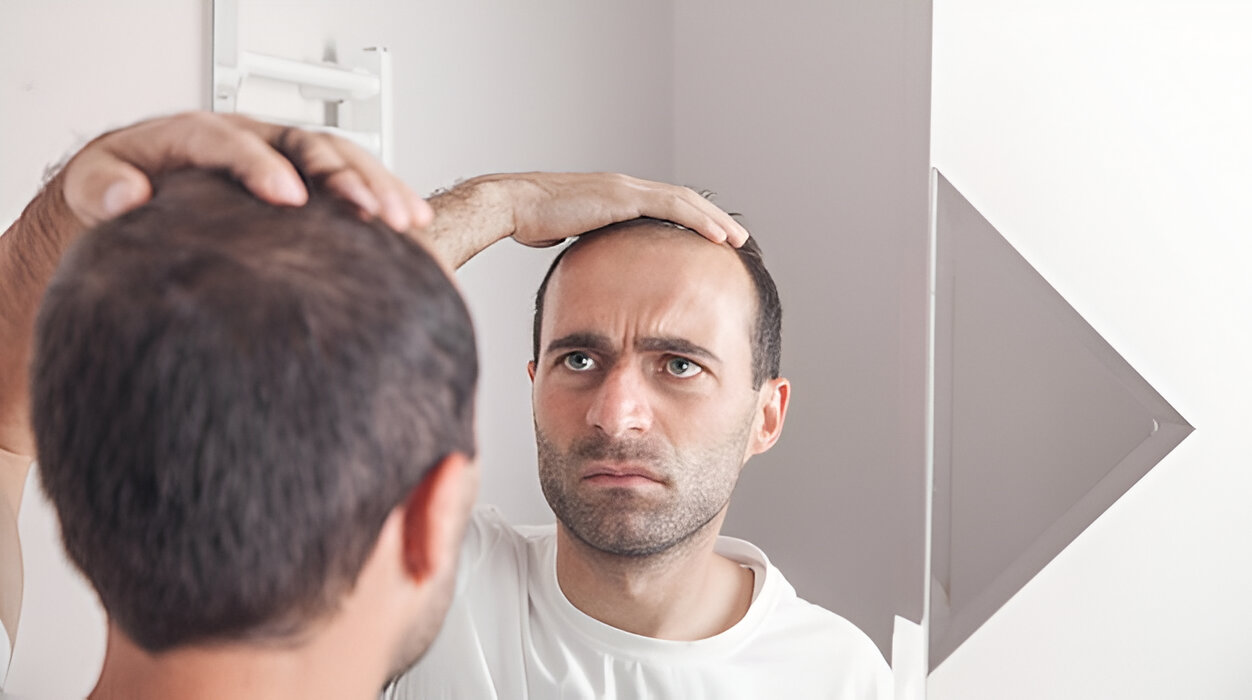
Hair transplant is a popular and effective solution for hair loss, but not everyone is an ideal candidate for the process. Understanding whether you are a suitable candidate can help you determine realistic expectations and achieve the best results. In this blog, we will discuss major factors that determine whether you are eligible for a hair transplant, including a variety of hair loss and other factors.
Who is a Good Candidate for Hair Transplantation?
A good candidate for hair transplantation usually fulfills the following criteria:
- Enough donor hair: The availability of healthy hair follicles is usually important for a successful transplant, from the back of the scalp or from the back.
- Stable hair loss: hair loss should have been stabilized, as passing through a transplant can cause more balding over time.
- Good overall health: Candidates should not have medical conditions that can interfere with treatment or hair growth.
- Realistic expectations: It is necessary to understand the results and restrictions of a Hair transplantation.
- Scalp conditions: A healthy scalp free from infection, inflammation, or other conditions is ideal for a successful process.
Types of Hair Loss and Suitability for Hair Transplant
Male and female pattern hair loss (Androgenetic alopecia)
It is the most common type of hair loss and is caused by genetics and hormonal changes. It affects both men and women differently:
Male: A receding hairline and are characterized by being thin on the crown.
Women: Usually a result of being overall thinner without a receding hairline.
Individuals who are facing stable hair loss are usually good candidates for a hair transplant, provided they have enough donor hair.
Diffuse Unpatterned hair loss (Dupa)
Unlike pattern hair loss, DUPA is characterized by wider thinning across the scalp, including the donor area. Since there is no stable donor area, people with Dupa cannot be good candidates for hair transplant.
Hair Loss Due to Trauma or Scarring
Those who have lost hair due to burns, accidents or surgery can qualify for a transplantation, based on their scalp position and the availability of donor hair.
Alopecia Areta and autoimmune hair loss
Conditions such as the alopecia Ata cause patchy hair loss due to an autoimmune reaction. Since the immune system attacks the hair follicles, hair transplant is not usually recommended for such situations.
Additional Factors That Influence Eligibility
Age Consideration
While there is no specific age limit for hair transplant, young patients (below 25) are advised that their hair loss pattern is stabilized. Passing through a transplant can quickly lead to an unnatural appearance as hair fall continues.
Hair type and texture
The texture, thickness and color of your hair affect the final appearance of implants. Excessive thick hair often provides better coverage than thin hair.
Scalp Laxity
Scalp laxity refers to looseness of the scalp. People with a flexible scalp have a high success rate for FUT (follicular unit transplantation) procedures, as more grafts can be extracted.
Lifestyle
Unhealthy habits such as smoking, poor diet and excessive alcohol consumption can negatively affect the results of hair transplant. Candidates committed to a healthy lifestyle will have a better success chance.
Consult with a hair transplant specialist
If you are considering a hair transplant, it is crucial to consult a qualified dermatologist. A professional assessment will help determine your character and provide you with a personal treatment plan.
Consultation:
Everyone who experiences hair loss is a good candidate for hair transplant. Factors such as hair loss types, donor hair availability, overall health and lifestyle options play an important role in determining the eligibility. If you are uncertain whether you are a good candidate, then the best hair transplant clinic in Chennai for expert guidance and personal treatment options. Consult with Dr. Hanan Dermatology Specialty and Trichology Clinic.
Ready for Permanent Hair Restoration?
Table of Contents
Is a Hair Transplant Permanent and for How Long?
Is a Hair Transplant Permanent and for How Long?
Is a hair transplant permanent? Understand how long results last, what affects longevity, and how to care for your transplanted hair for the best outcome.
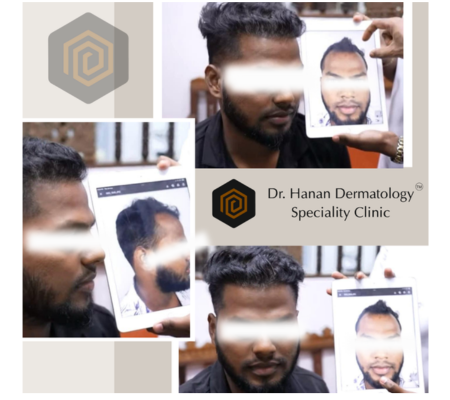
Let’s be honest, if you think of Hair Transplant what’s the first question that comes to your mind? Most people have this question in mind: “Is Hair Transplant permanent?” The answer is absolutely yes!
A hair transplant is designed as a long-term solution for hair loss, using its own natural hair to restore bald or thin areas. The transplanted hair follicle is taken from the donor area – usually the back or sides of your scalp – where hair is resistant to genetically balding. Once these follicles are transplanted into bald spots, they settle, heal, and grow like their natural hair.
What about the healing time? After the procedure, the healing process usually takes about 7 to 10 days, during which there may be minor crusty patches of skin and redness. Within a few weeks, implanted hair can shed – a completely common phase called shock loss – but don’t worry! It makes way for the growth of strong, healthy hair in the next months. From 3 to 6 months, you will start seeing visible regrowth, and in 12 to 18 months, you will enjoy the full, natural looking head of hair.
Two permanent hair transplant techniques used for hair restoration:
1. Follicular Unit Extraction (FUE)
In this method, hair follicles are removed one by one from the donor area using a special tool. These small grafts are then carefully placed in bald spots. Since no major cuts are made, the medical process is fast, and there are no marks. Transplanted hair will grow naturally for a lifetime, giving it a permanent solution to hair loss.
2. Follicular Unit Transplantation (FUT)
This technique involves removing a small strip of skin from the back of the scalp. The strip is then divided into individual hair follicles, which are transplanted into bald areas. Since hair comes from genetically strong areas, it remains permanent and grows like natural hair.
Is a Hair Transplant Permanent?
The simple answer is yes – a hair transplant is a permanent solution to hair loss. The reason for this is that the implanted hair is taken from areas of the scalp which are naturally resistant to balding, which are known as DHT-resistant areas (usually the back of the head and sides). These hair follicles maintain its resistance even after it is transferred to the bald spot, ensuring long – term hair growth.
Factors that ensure long -term success
While a hair transplant is designed to be permanent, many factors contribute to achieving the best and longest lasting results:
A Skilled Surgeon – The proper positioning of hair follicles ensures natural looking results and maximum grafts existence.
Healthy Donor Area – A strong and adequate supply of hair in the donor area affects long -term hair growth.
Proper Aftercare – Following post-transplant instructions, avoiding excessive sunlight, and taking prescribed medications helps maintain results.
Overall Health & Lifestyle – A balanced diet, stress management, and avoiding smoking contribute to hair longevity.
What is expected after the process?
After a hair transplant, the healing and growth process takes place in stages:
Week 1-2: Light redness and scabbing in the transplanted area, which recover in about 7-10 days.
Week 3-6: There is a temporary phase called shock loss, where implanted hair shed-this is completely normal.
Month 3-6: New hair starts growing, and the scalp looks full.
Month 6-12: Hair naturally thickened and continues to mix with existing hair.
12-18 months: Full results appear, with permanent, natural hair growth.
A successful hair transplant does not mean many bald spots, and the results last throughout your lifetime-you get thick, natural looking hair that grows like the rest of the hair of your scalp.
How to Maintain Your Hair Transplant Results for the Long Term:
A hair transplant is a permanent solution, but requires proper care to maintain healthy, long -lasting results. Like natural hair, Transplanted hair requires proper nutrition, scalp care and professional follow -up to stay strong and healthy
Essential Tips for Long-Term Hair Transplant Care
1. Follow a soft hair care routine
- Use a light, sulfate-free shampoo to keep the scalp clean and prevent irritation.
Especially in the early months, avoid scraping or scratching the scalp
You should avoid using rigid chemical remedies such as hair dye, bleaching, or permit for at least 6 months after the procedure.
2. Keep a healthy diet
- Eat a protein – rich diet (eggs, fish, nuts, dairy) to strengthen hair.
- For healthy hair growth, consume vitamins and minerals like biotin, zinc and iron.
- Stay hydrated and reduce additional caffeine and processed foods.
3. Avoid smoking and alcohol
- Smoking reduces hair follicles, which slows growth.
- Excessive alcohol intake can affect the absorption of nutrients, weakening hair.
4. Protect your skull from sunlight
- Wear a hat or use sunscreen on your scalp to protect it from UV damage.
- Avoid exposure to the sun directly for a long time, especially in the first few months.
5. Regular follow – up schedule with a dermatologist
- A professional check-up helps track progress and detect any issue.
- If necessary, your doctor may recommend scalp treatment or medicines.
Role of PRP Therapy and other assistant treatments
PRP (platelet-rich plasma) therapy
PRP therapy is an effective post-transplant treatment that increases hair growth by stimulating hair follicles. This involves drawing a small amount of your blood, processing it to extract growth factors and injecting it into the scalp.
- Strengthens existing and implanted hair
- Gave speed to Healing and Regrowth
- increases hair density and thickness
Other Assistant Treatment
- Minoxidil (topical solution): Helps to encourage growth and maintain results.
- Finasteride (oral medicine): In some cases reduces the hair thinning.
- Scalp massaging: Improve blood circulation and nourish hair follicles.
When to consult a doctor
If you are noticing hair thinning or baldness and considering a hair transplant, the first step you have to do is consult a doctor. A professional assessment helps determine the reason for your hair loss – whether it is genetic, hormonal, or due to lifestyle factors – and whether a transplant is the perfect solution.
Doctors will examine your scalp, They check the healthy donors hair availability, and discuss alternative treatments if necessary.
A doctor consultation also gives you a clear understanding of the procedure, expected results and recovery process. If you have any medical conditions or have medicines that can affect therapy, your doctor will guide you on the required precautions. A quick talk to an expert ensures that you make an informed decision and get the best long – term results for natural hair restoration.
Conclusion:
A hair transplant is a permanent solution to restore natural hair, but success depends on the proper plan, expert execution and aftercare. Understanding the process, treatment process and long -term maintenance ensures the best results, which requires a specialist consultation.
At Dr.Hanan Dermatology Specialty Clinic & Hair Transplant Center, we provide specialist consultation to assess your hair loss and recommend the best treatment for you. Whether you are considering a hair transplant or needs guidance on hair restoration options, our team is here to help.
Book your consultation today and take the first step towards achieving your confidence with a full, and natural looking head of hair.
Ready for Permanent Hair Restoration?
Table of Contents
What is PRP Hair Treatment and the Benefits of PRP Treatment
PRP Hair Treatment and the Benefits of PRP Treatment
PRP, or Platelet-Rich Plasma, hair treatment has gained immense popularity as a non-invasive solution to hair loss and thinning.
Gem Bhoomi & Buildings, OMR, A Block, Padur, Chennai, Tamil Nadu 603103

Introduction to PRP Hair Treatment
PRP, or Platelet-Rich Plasma, hair treatment has gained immense popularity as a non-invasive solution to hair loss and thinning. Leveraging the body’s natural healing properties, PRP therapy offers a promising alternative to traditional hair restoration methods. But what makes this treatment so effective? Let’s delve into the science, process, and benefits of PRP hair treatment.
What is PRP Hair Treatment?
Before exploring remedies, it’s important to understand what causes dark circles. Common reasons include:
PRP hair treatment uses the patient’s blood to extract platelets, which are then injected into the scalp to stimulate hair follicles. Platelets contain growth factors that encourage tissue regeneration and repair, making them ideal for addressing hair thinning and loss.
1. Aging – Thinning skin and losing fat and collagen can make blood vessels more visible.
2. Fatigue and Lack of Sleep – Poor rest affects circulation, causing blood to pool under the eyes.
3. Allergies – Allergic reactions can lead to swelling and puffiness, exacerbating dark circles.
4. Sun Exposure – Overexposure to the sun increases melanin production, darkening under-eye skin.
Knowing the underlying cause can help you choose a more targeted solution.
How PRP Hair Treatment Works
The treatment begins with drawing a small amount of blood from the patient, which is processed in a centrifuge to separate platelets from other blood components. These concentrated platelets are then injected into the scalp, targeting areas of hair loss.
The Science Behind PRP Therapy
Platelets release bioactive proteins that enhance cell proliferation and angiogenesis, effectively rejuvenating hair follicles. Clinical studies have shown increased hair density and diameter in patients undergoing PRP therapy.
Benefits of PRP Hair Treatment
Hair Restoration and Growth Stimulation
PRP treatment encourages dormant hair follicles to enter the growth phase, leading to thicker, healthier hair.
Minimally Invasive Procedure
Unlike surgical methods, PRP involves simple injections without incisions or downtime.Long-Term Results and Low Maintenance
Many patients report sustained improvements with minimal follow-up treatments.
Ideal Candidates for PRP Hair Treatment
PRP therapy is best suited for individuals experiencing early-stage hair thinning. It is effective for both men and women and can address conditions like androgenetic alopecia and traction alopecia.
The PRP Treatment Process
Pre-Treatment Consultation and Preparation
Patients undergo a thorough scalp examination and are advised to avoid certain medications.The Procedure Step-by-Step
From blood draw to platelet injection, each step is carefully executed in a clinical setting.Post-Treatment Care and Recovery
Patients are typically advised to avoid vigorous scalp manipulation and follow a prescribed care regimen.
Potential Side Effects and Risks
Though generally safe, PRP therapy may cause mild redness or swelling at the injection site. Rare complications include infection or temporary shedding.
Comparing PRP with Other Hair Restoration Methods
PRP vs Hair Transplants
While transplants involve surgical grafting, PRP rejuvenates existing follicles non-invasively.PRP vs Medications
Medications like Minoxidil require daily use, whereas PRP offers periodic treatment for lasting results.
Costs and Accessibility of PRP Hair Treatment
The average cost of PRP therapy ranges from $500 to $1,500 per session. Many clinics offer financing options to make the treatment accessible.
FAQ’S
Most patients report minimal discomfort due to the use of numbing agents.
A typical regimen involves 3–4 sessions spaced a month apart, with maintenance treatments every 6–12 months.
Yes, PRP can complement medications and other therapies for enhanced results.
In advanced cases, hair transplants or combined therapies may be recommended.
Visible improvements often occur within 3–6 months of treatment.
Table of Contents
How to Remove Dark Circles Under Eyes Permanently Naturally
How to Remove Dark Circles Under Eyes Permanently Naturally
Discover How to Remove Dark Circles Under Eyes Permanently Naturally and look refreshed! Simple steps to restore your skin’s glow.
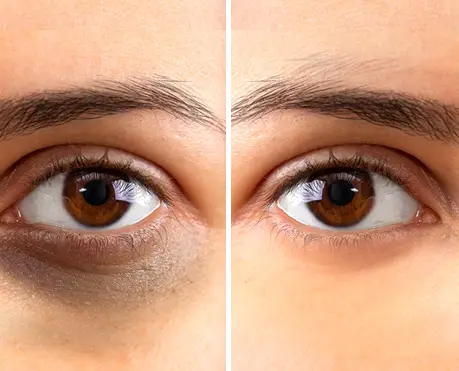
Dark circles under the eyes can affect our appearance. It makes us look tired, stressed, or older. In this article, we’ll introduce an effective method to remove dark circles under your eyes permanently.
Our solutions include natural and advanced treatments. This allows you to choose the best method for long-lasting results.
Understanding the Causes of Dark Circles
Before exploring remedies, it’s important to understand what causes dark circles. Common reasons include:
1. Genetics – Some people inherit a predisposition to dark circles.
2. Aging – Thinning skin and losing fat and collagen can make blood vessels more visible.
3. Fatigue and Lack of Sleep – Poor rest affects circulation, causing blood to pool under the eyes.
4. Allergies – Allergic reactions can lead to swelling and puffiness, exacerbating dark circles.
5. Sun Exposure – Overexposure to the sun increases melanin production, darkening under-eye skin.
Knowing the underlying cause can help you choose a more targeted solution.
How to Remove Dark Circles Under Eyes Naturally
1. Use a cold compress
Applying a cold compress to the eyes can reduce swelling and constrict blood vessels. Can help reduce dark circles.
How to use:
a. Wrap the ice in a cloth and press gently on the under-eye area for 10 minutes.
b. store two tablespoons in the refrigerator overnight and apply around your eyes in the morning.
2. Try cucumber slices
Cucumbers contain antioxidants and are known for their cooling properties. This makes cucumbers popular in treating dark circles.
How to use:
a. Slice the cucumber and chill in the refrigerator for 30 minutes.
b. Place the piece on your closed eyelid for 10-15 minutes.
3. Use aloe vera gel
Aloe vera has moisturizing properties that help hydrate and soothe the skin. which can reduce puffiness and dark circles under the eyes
How to use:
a. Apply a thin layer of aloe vera gel.
b. Apply under the eyes before going to bed.
c. Leave it overnight and wash off with cold water in the morning.
4. Almond oil, vitamin E
Almond oil is rich in vitamin E. which helps nourish and revitalize the skin and makes dark spots fade over time.
How to use:
a. Mix 2-3 drops of almond oil with a vitamin E capsule.
b. Before going to bed, gently massage the skin under your eyes.
5. Tea bags are antioxidants
Tea, especially green tea contains antioxidants and caffeine To improve blood circulation and reduce swelling
How to use:
a. Put two tea bags in hot water. Then chill in the refrigerator.
b. Keep the tea bags cool with your eyes closed for 10-15 minutes.
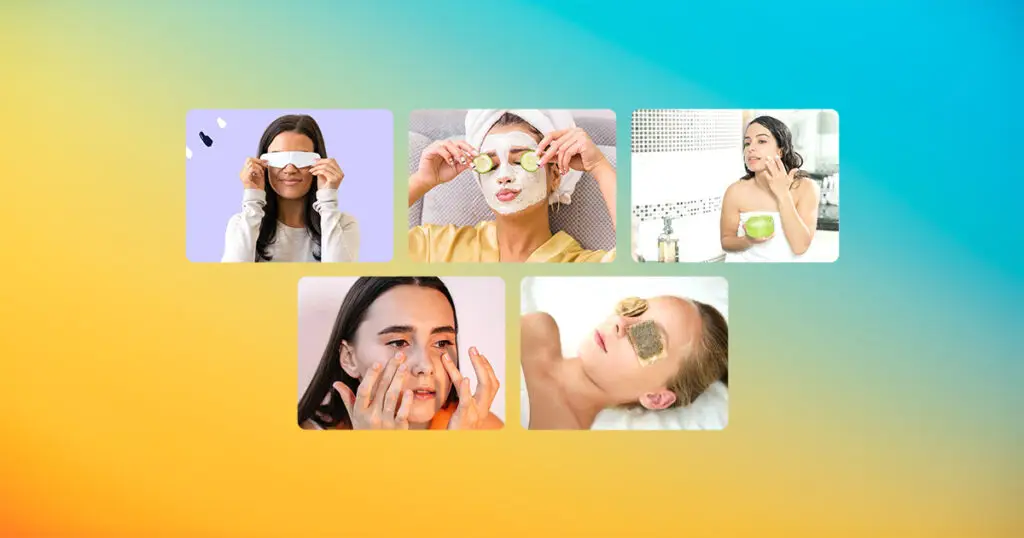
Lifestyle Changes to Prevent Dark Circles
1. Prioritize quality sleep.
Lack of sleep is one of the leading causes of dark circles. Aim for at least 7-8 hours of quality sleep every night so your skin can rebuild.
2. Maintain moisture
Dehydration makes the skin look dull and makes blood vessels more visible. Drinking 8-10 glasses of water every day can plump the skin and reduce dark circles.
3. Protect your skin from sunlight
Use sunscreen around your eyes every day to protect against UV rays that can cause dark skin. Wearing sunglasses also helps protect this sensitive area from the sun.
4. Maintain a balanced diet
Eat foods rich in vitamin C, iron, and antioxidants. These nutrients support healthy skin and improve circulation. Prevent and reduce dark circles

Can Dark Circles Be Permanently Removed?
In certain cases, it might be possible to remove dark circles under the eyes permanently, but this largely depends on the underlying cause. Dark circles often have multiple contributing factors, some of which may be temporary while others are more persistent.
Temporary dark circles may diminish with lifestyle changes, but in other cases, they can be more enduring. Regardless, dark circles are usually harmless and not necessarily an indication of fatigue or poor health. For those who wish to reduce them for cosmetic reasons, here are some strategies that may help:
1. Getting Adequate Sleep
Though often associated with a lack of sleep, dark circles can be more noticeable when sleep-deprived rather than being directly caused by it. A 2021 study suggests that people experiencing sleep deprivation may perceive their dark circles as darker. Developing a sleep routine can benefit overall well-being and skin appearance. For persistent sleep issues, consider consulting a doctor.
2. Applying Cold Compresses
Dark circles can be caused by widened or visible blood vessels beneath the skin. Cold compresses or cooling massage tools may help by temporarily constricting blood vessels and reducing the appearance of dark circles. Cold compresses may also reduce puffiness, which can cast shadows that make dark circles appear worse.
3. Using Caffeine
Like cold therapy, caffeine can constrict blood vessels. Some eye creams contain caffeine for this purpose. A 2024 study found that a 3% caffeine eye cream reduced melanin levels around the eyes in a small group of participants, suggesting it may lighten dark circles. Larger studies are needed to confirm these findings.
4. Minimizing Sun Exposure
Hyperpigmentation, often due to UV exposure, can cause dark circles. Protecting the eye area from the sun with sunscreen, sunglasses, and hats may prevent darkening and reduce signs of aging.
5. Treating Allergies
Allergies are linked to dark circles, as they can lead to inflammation and rubbing of the eyes, resulting in hyperpigmentation. Treating underlying allergies can help reduce rubbing and improve skin health.
6. Using Vitamin C
A 2009 clinical trial found that a 10% vitamin C product increased skin thickness beneath the eyes, reducing dark circle visibility by stimulating collagen production. However, more research is needed to confirm the benefits and safety of long-term vitamin C use around the eyes.
7. Applying Vitamin K
According to a 2021 review, vitamin K may help reduce the appearance of dilated blood vessels and improve skin elasticity. This suggests potential benefits for treating dark circles, though more research is needed.
8. Using Hydroquinone, Kojic Acid, or Arbutin Creams
Skin-lightening creams containing hydroquinone, kojic acid, or arbutin may reduce pigmentation-based dark circles. These compounds decrease melanin production, though they may cause side effects. A doctor’s supervision is recommended, as some products may contain harmful ingredients.
9. Concealers and Makeup
Although not a permanent fix, concealers, and makeup can effectively hide dark circles. Many brands offer products designed for the under-eye area.
Retinoids and Dark Circles
Retinoids, like retinol, are generally not recommended for use around the eyes. Oral retinoids can increase the risk of dry eye disease, an irreversible condition. While some eye products include retinoids, it’s best to avoid them until more is known about their safety.
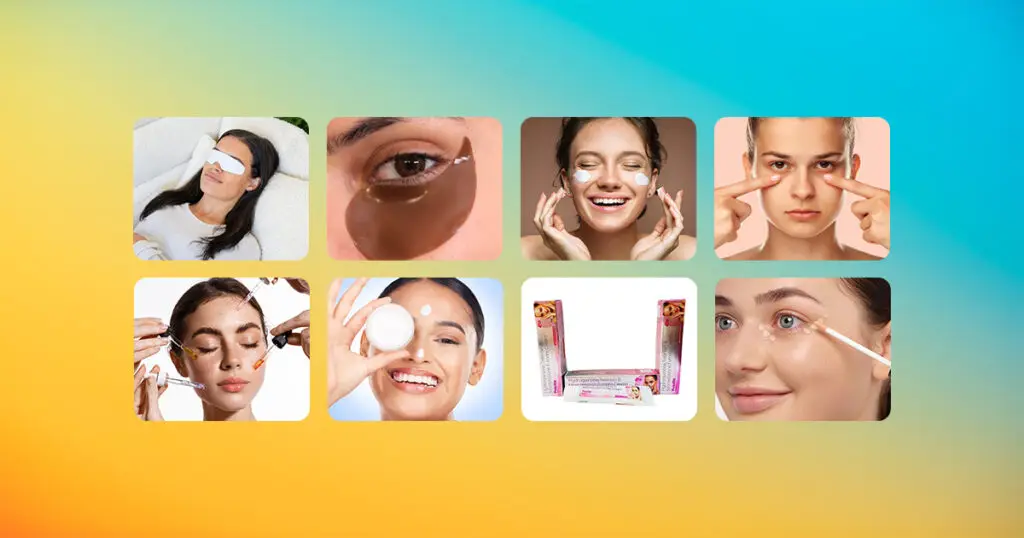
Advanced Treatments for Permanent Removal of Dark Circles
Advanced tanning treatments are available for those who want a faster or more permanent solution.
1. Chemical peeling
Chemical peels contain an acidic solution to exfoliate and revitalize the skin. It focuses on dark skin and dark circles.
What to expect:
a. A dermatologist will choose the right peel based on your skin type and the severity of the dark circles.
b. The treatment takes approximately 10-15 minutes, with minor redness or peeling as a side effect.
2. Laser treatment
Laser treatment targets melanin in the skin and reduces under-eye pigmentation.
What to expect:
a. Dermatologists use a laser device to focus light energy on dark areas.
b. To stimulate collagen production, patients may require several sessions to achieve the best results.
3. Dermal filler
Dermal fillers are injectable treatments that can make the under-eye area appear plumper. Helps reduce the appearance of dark circles due to volume loss.
What to expect:
a. Inject hyaluronic acid filler into the under-eye area to instantly add volume and reduce shadows.
b. Results may last up to a year. and should be performed by a trained medical professional.
4. Microneedling
Microneedling Fine needles are used to create micro-trauma in the skin. which promotes collagen production and improves the appearance of dark circles.
What to expect:
a. The treatment involves numbing the under-eye area, and then gently puncturing it with a microneedling device.
b. Patients may experience redness, but this fades within a day or two.
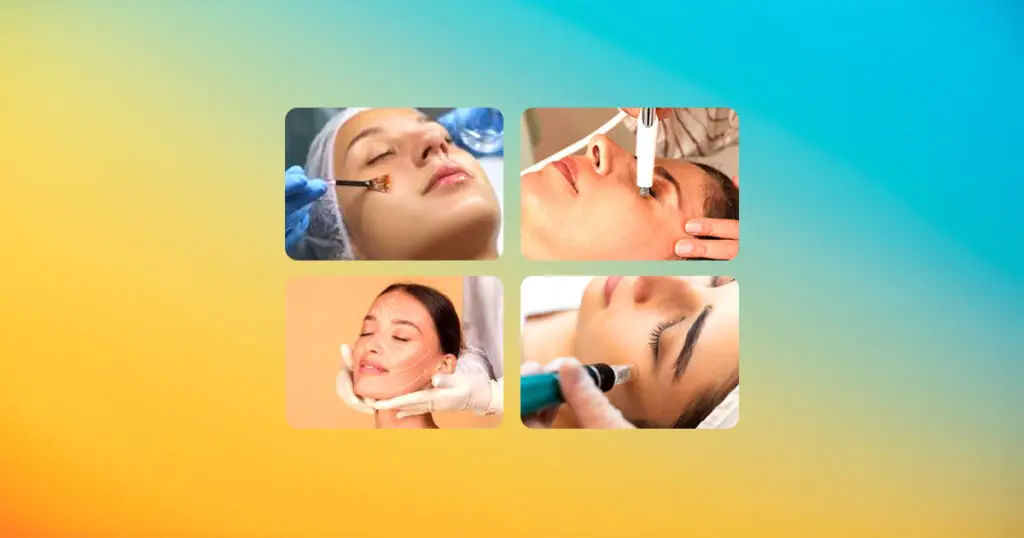
Choosing the Right Treatment for You
Whether you opt for natural remedies or advanced treatments, it’s essential to select a solution that aligns with your skin type, budget, and goals. For best results, consult with a dermatologist who can guide you based on the cause of your dark circles and help you achieve permanent results.
Why Choose Dr. Hanan for Dark Circle Treatment?
Dr. Hanan combines expertise in cosmetic dermatology with advanced treatments like laser therapy and chemical peels to address dark circles effectively.
Customized care, natural-looking results, and thorough aftercare ensure a refreshed appearance and high patient satisfaction. For brighter, rejuvenated eyes, Dr. Hanan is a trusted choice.
Conclusion
Dark circles under the eyes are common, even in children, and can be due to genetics or thin skin. If they appear suddenly, worsen, or are accompanied by symptoms like dehydration or allergies, they may indicate an underlying condition. For circles in one eye or with other concerning symptoms, consult a doctor.
FAQ’S
Natural remedies can reduce dark circles but may not offer permanent results. Consistent care can help improve their appearance.
Remedies like chilled cucumber slices, aloe vera, almond oil, and tea bags can soothe and lighten dark circles.
Results can take a few weeks with consistent use, depending on your lifestyle and skin type.
Table of Contents
Dermatologists recommended shampoo in India for dry and frizzy hair
Dermatologists recommended shampoo in India for dry and frizzy hair [2025]
Find the best dermatologist-approved shampoo in India to nourish dry and frizzy hair. Achieve smoother, healthier hair with expert-recommended care.
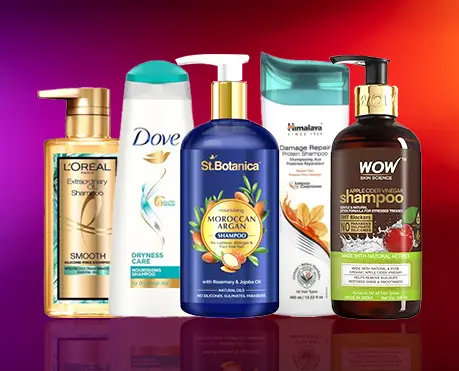
Dermatologists recommended shampoo in India for dry and frizzy hair – Dry, frizzy hair is a common problem for many people in India. This is often due to unique challenges posed by weather, pollution, and other environmental factors. Choosing the right shampoo can make a significant difference in managing these hair problems.
Dermatologists recommend topical shampoos that contain nourishing ingredients that moisturize and smooth the hair and reduce hair loss.
This guide explores the best dermatologist-recommended shampoos for dry, frizzy hair in India. and offers tips on maintaining healthy hair
Understanding the Needs of Dry and Frizzy Hair
Dry, frizzy hair lacks moisture. For many people, it causes hair to become breakable, rough, and lack shine. This information covers:
1. Environmental stressors: Pollution, sunlight, and hard water can strip essential oils from your hair.
2. Heat styling: Regular use of heat tools can dehydrate the hair and cause long-term damage.
3. Chemical treatment: hair dyeing, re-synthesis, and other treatments It tends to strip the hair of its natural moisture.
For dry, frizzy hair A shampoo that focuses on moisturizing, smoothing, and nourishing the hair from root to tip is important. Below are some effective options recommended by dermatologists in India.
Top Dermatologist Recommended Shampoos for Dry and Frizzy Hair [2025]
1. L’Oréal Paris Extraordinary Oil Smooth Shampoo
Formulated with a blend of six precious oils, this shampoo from L’Oréal Paris deeply nourishes dry and frizzy hair. It provides a salon-like smoothness, making hair feel soft and manageable. The lightweight formula ensures that hair does not feel greasy while addressing frizz and flyaways.
Key Ingredients:
a. Camellia Oil, Almond Oil, and Sunflower Oil: Known for their nourishing properties.
b. Coconut Oil: Adds moisture without weighing hair down.
c. Soothing Lavender Oil: Helps in reducing scalp irritation, promoting a healthier scalp.
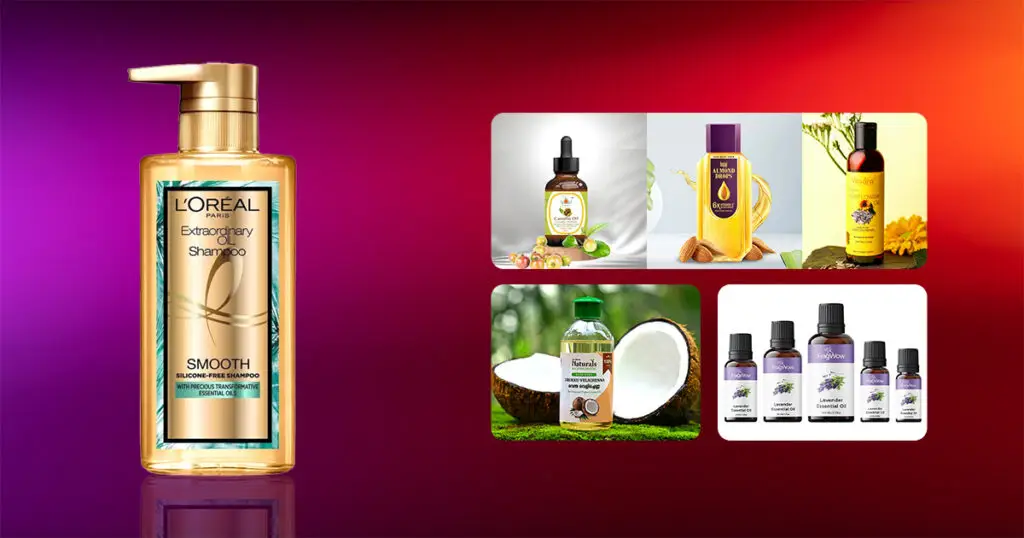
2. Dove Dryness Care Shampoo
Dove Dryness Care Shampoo is specifically designed for those dealing with hair dryness. The unique Pro-Moisture Complex in this shampoo works to replenish and retain moisture, restoring softness to the hair without making it feel heavy or oily.
Benefits:
a. Moisture Retention: Helps hair lock in hydration, preventing it from drying.
b. Gentle on Hair: Suitable for daily use due to its mild, pH-balanced formula.
c. Visible Smoothing: Reduces frizz and enhances shine, making hair look smoother.
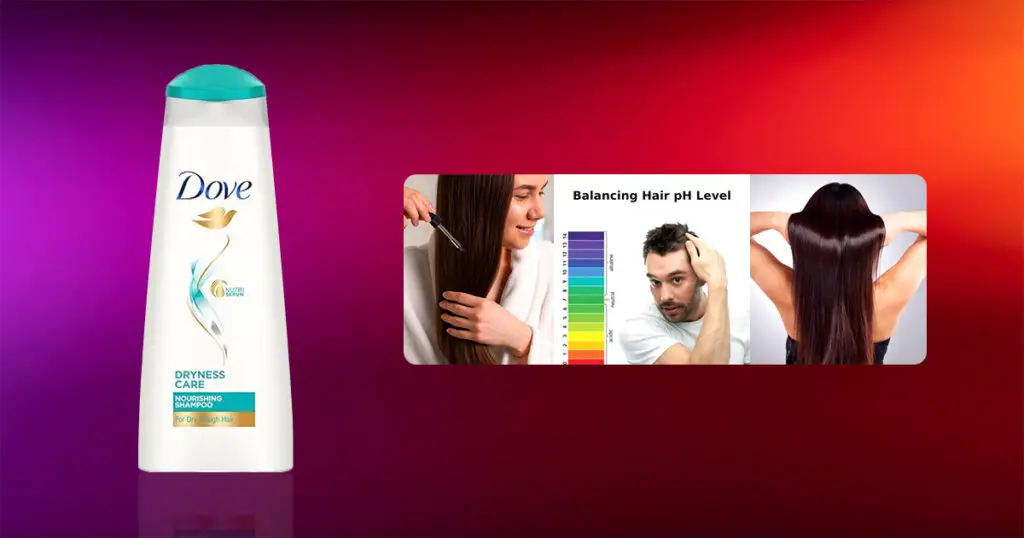
3. St.Botanica Moroccan Argan Oil Shampoo
Moroccan Argan Oil has long been celebrated for its hydrating and restorative properties. This shampoo from StBotanica is rich in natural oils and extracts that deeply nourish hair. It’s free from sulfates and parabens, which helps maintain the hair’s natural balance.
Key Ingredients:
a. Argan Oil: Deeply moisturizes and protects hair from damage.
b. Vitamin E: Provides antioxidant support, reducing oxidative stress.
c. Almond Oil and Rosemary Extract: Improve scalp health and hair strength.
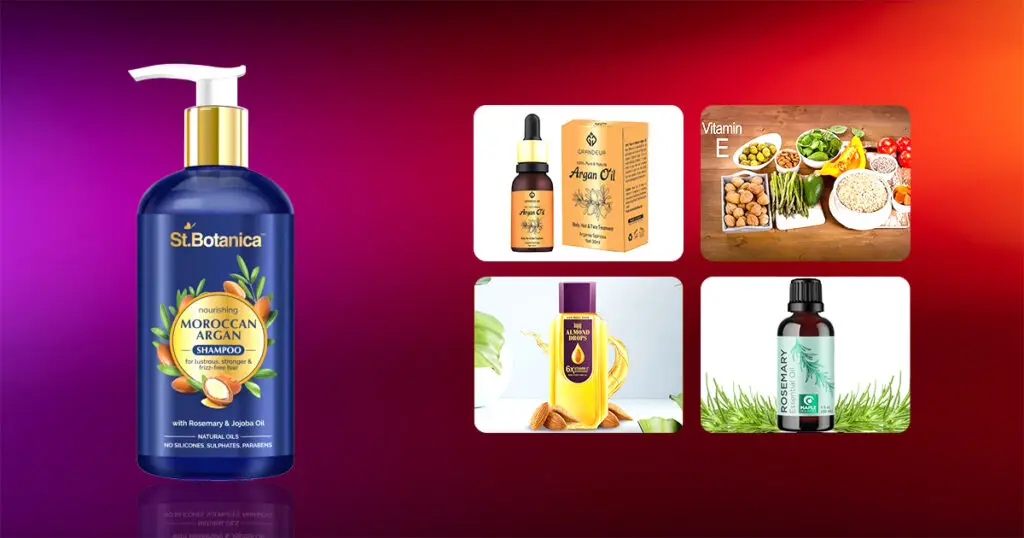
4. Himalaya Herbals Damage Repair Protein Shampoo
Dermatologists recommended shampoo in India for dry and frizzy hair
Himalaya’s Damage Repair Protein Shampoo is a highly effective formula for dry, damaged hair. Enriched with natural proteins, it repairs hair and prevents further damage, leaving it soft, smooth, and manageable.
Ingredients and Benefits:
a. Chickpea Protein: Fortifies and nourishes hair.
b. Aloe Vera and Licorice: Provide soothing effects to the scalp, reducing dryness.
c. No Harsh Chemicals: Free from parabens and SLS, which helps maintain hair health.

5. WOW Skin Science Apple Cider Vinegar Shampoo
This gentle, detoxifying shampoo from WOW Skin Science is formulated with raw apple cider vinegar, which helps restore the scalp’s pH balance. It’s ideal for those dealing with frizz due to excess oil or product buildup.
Main Benefits:
a. Apple Cider Vinegar: Naturally clarifies and removes build-up.
b. Almond Oil and Argan Oil: Deeply moisturize and smooth hair.
c. Paraben and Sulfate-Free: A gentle formula that doesn’t strip natural oils.
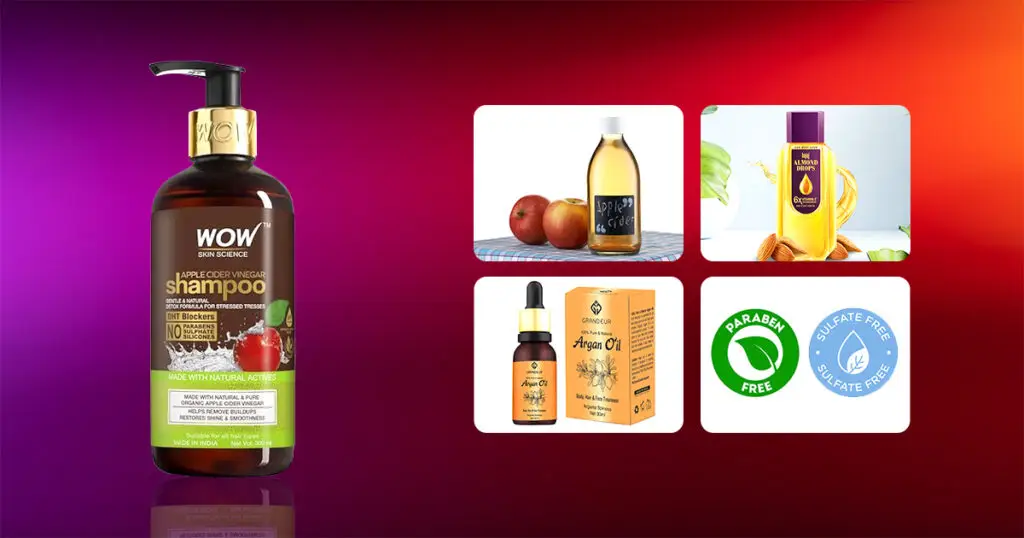
6. Matrix Biolage SmoothProof Shampoo
Matrix Biolage SmoothProof Shampoo is known for its frizz-control formula that works well in humid conditions. Inspired by the moisture-retaining properties of camellia, this shampoo provides smoothness, helping keep hair frizz-free all day.
Active Ingredients:
a. Camellia Flower Extract: Known for adding a protective layer to hair, preventing moisture loss.
b. Mild Cleanser: Gently cleanses without causing further dryness.
c. Humidity Defense: Keeps frizz in check even in humid weather.
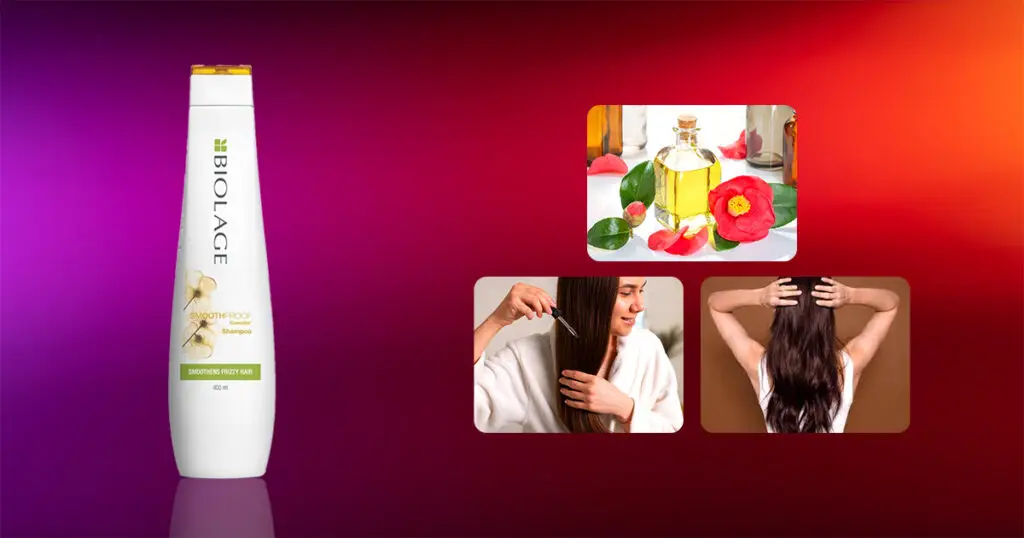
Tips for Choosing the Right Shampoo for Dry and Frizzy Hair
When choosing shampoo Look for the following features that help manage dry, frizzy hair.
1. Moisturizing ingredients: Choose products that contain ingredients like coconut oil. Argan oil, shea butter, or glycerin attracts and retains moisture.
2. Gentle cleanser: Avoid shampoos that contain high levels of sulfates. which can strip the hair of its natural oils This will make the hair more dry.
3. Silicone-free: Although silicone provides temporary smoothness to hair, it can build up over time. It makes hair feel less heavy and dull.
4. pH balanced formula: Hair health is affected by pH; pH-balanced products prevent irritation and dryness of the scalp.
Additional Tips for Managing Dry and Frizzy Hair
1. Normalization
Using conditioner after washing your hair will add another layer of moisture. Look for a conditioner that has keratin, protein, and moisturizing oils. To help keep hair frizzy and moisturized.
2. Limit heat styling
Reduce the use of heat styling devices such as straighteners and curling irons. This is because these things can cause the skin to become more dry. When heat styling is necessary Use a heat protection spray to minimize damage.
3. Deep Conditioning Treatments
A weekly deep conditioning mask can restore moisture and prevent frizz. Choose a mask that contains natural oils or proteins for maximum benefits. Argan oil and olive oil masks are extremely effective in restoring softness and radiance.
4. Protect your hair from environmental stress
In Indian weather conditions Pollution and harsh sunlight can weaken your hair. Using a scarf or hat can provide physical protection. And using a leave-in conditioner can protect your hair from UV rays.
5. Regular Trimming
Dry, frizzy hair tends to split ends. Regular trimming helps prevent split ends from reaching the hair shaft. Makes hair look healthy.
Why Choose Dr. Hanan Dermatologist Recommended Shampoo for Dry & Frizzy Hair India
Dr. Hanan’s Dermatologist Recommended Shampoo is specially formulated to treat dry and frizzy hair, making it ideal for those looking for expert-approved hair care. Here’s why it’s the right choice:
1. Nourishing Ingredients: The shampoo is crafted with dermatologist-selected ingredients that deeply hydrate dry hair, restoring its natural moisture balance.
2. Frizz Control: Designed to tame frizz, it smooths hair strands, leaving them soft and manageable without weighing them down.
3. Gentle and Safe: Free from harsh chemicals, it’s safe for regular use and suitable for sensitive scalps.
4. Proven Results: Trusted by Dr. Hanan, a leading dermatologist, this shampoo provides lasting results and a healthy shine.
Choose Dr. Hanan’s shampoo for effective, dermatologist-backed care that keeps hair nourished, smooth, and frizz-free!
Conclusion
Managing dry, frizzy hair in India can be done with the right combination of dermatologist recommended shampoos and a regular hair care routine.
The shampoo in this article has been specially designed to fight dryness and frizz in the Indian climate with moisturizing ingredients that provide hydration. Smoothing and nourishing benefits.
FAQ’S
Look for argan oil, glycerin, and hyaluronic acid to lock in moisture and reduce frizz.
Use 2-3 times a week to avoid stripping natural oils. Follow with conditioner.
Yes, choose sulfate-free shampoos to keep both moisture and color intact.
Table of Contents
Dark Underarms: Causes, Prevention, and Effective Treatments
Dark Underarms: Causes, Prevention, and Effective Treatments
Discover what causes dark underarms, how to prevent them, and the best treatments for smooth, even-toned skin. Say goodbye to dark patches!
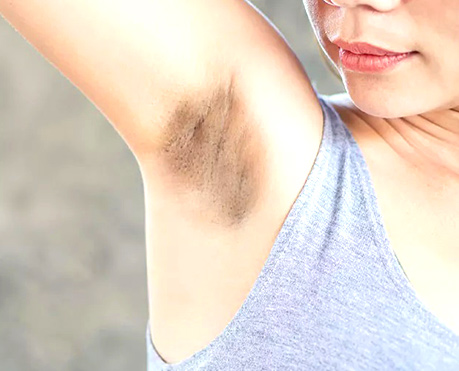
Dark underarms can be a source of discomfort and insecurity for many people, which often puts people off from wearing sleeveless shirts. Although this condition is normal and harmless, it can also have a significant impact on your confidence and self-esteem.
Understanding the causes of dark underarms and learning about effective treatments is important for anyone wanting to manage or prevent the condition.
In this guide, we’ll dive into the causes of dark underarms. intensive Find ways to prevent it. and provides effective treatments that can restore the skin’s glow.
What Causes Dark Underarms?
Dark underarms can be the result of many factors. Each factor contributes to color change or pigmentation in different ways. Here are the main reasons:
1. Hyperpigmentation
Hyperpigmentation is a common condition in which the skin’s surface is darker than the surrounding area. This is due to the production of too much melanin, which makes the skin-colored. It can be caused by genetics, sunlight, or inflammation.
2. How to shave and remove hair
Frequent shaving can cause your underarms to darken due to friction and irritation. Shaving does not remove the follicles at the root. This can leave a shadow under the skin. In addition, repeated shaving causes the skin to thicken over time. Resulting in dark skin Other hair removal methods, such as waxing, can injure the skin and may cause it to darken.
3. Rubbing from clothes
Tight clothing made from synthetic materials can irritate the delicate skin on your arms. This results in dark marks over time. Constant rubbing, especially from tight clothing, thickens the skin and makes it appear darker.
4. Chemical stimulants in deodorant and antiperspirant products
Some deodorants and antiperspirants contain harsh chemicals and fragrances that can cause irritation or allergic reactions. Resulting in blindness Products containing alcohol and aluminum are especially irritating to sensitive skin.
5. Acanthosis nigrican
This skin condition causes thick, dark patches. It is often associated with insulin resistance, obesity, and hormonal abnormalities. or endocrine disease. Acanthosis nigricans is often found in areas with folded skin, such as the armpits, and may require medical help.
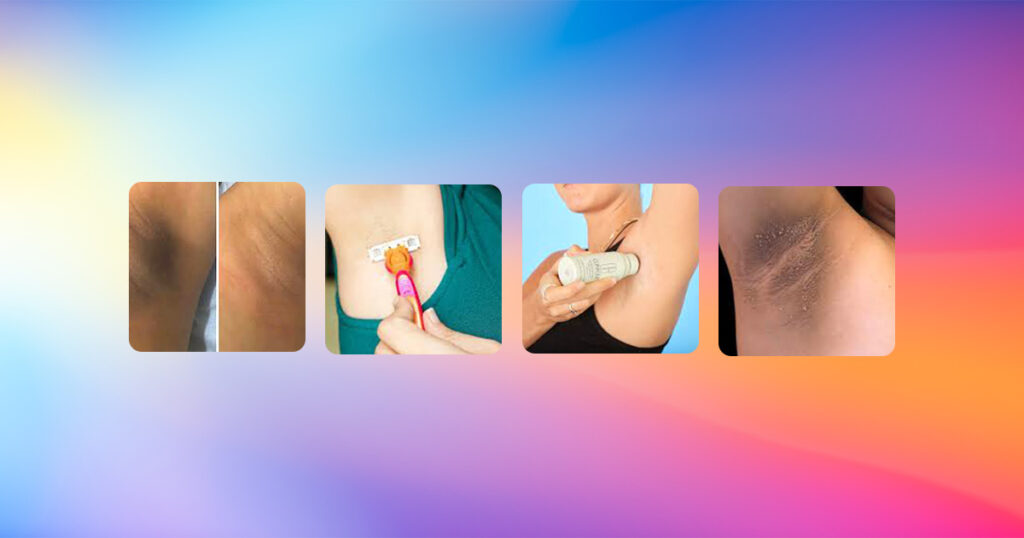
How to Prevent Dark Underarms
Prevention plays a crucial role in managing dark underarms. Here are some strategies to minimize the risk:
1. Use Gentle Hair Removal Techniques
Opt for gentler hair removal methods, such as waxing or laser hair removal. Waxing removes hair from the root, reducing the shadow effect, while laser hair removal can help permanently reduce hair growth in the area, decreasing the need for regular shaving.
2. Choose Hypoallergenic Deodorants
Select deodorants that are free from alcohol, fragrances, and aluminum. These ingredients can be irritating to sensitive underarm skin, leading to darkening. Hypoallergenic or natural deodorants are gentler and can prevent chemical reactions.
3. Wear Loose, Breathable Clothing
Clothing that is too tight or made from synthetic materials can trap moisture and increase friction. Choosing breathable, natural fabrics like cotton can reduce irritation and help the skin stay cool and dry, minimizing the likelihood of pigmentation.
4. Practice Good Hygiene
Regularly exfoliating the underarm area with a gentle scrub can remove dead skin cells and reduce the risk of discoloration. However, it is important to use mild exfoliants specifically designed for sensitive skin to avoid further irritation.
Effective Treatments for Dark Underarms
If dark underarms have already developed, there are several effective treatment options available. These treatments vary in intensity, so it’s essential to choose one based on skin type and the severity of pigmentation.
1. Skin Lightening Creams
Over-the-counter creams: Creams containing ingredients like kojic acid, arbutin, glycolic acid, and vitamin C can help lighten dark underarms over time. These ingredients work by inhibiting melanin production or exfoliating the outer layer of the skin.
Prescription creams: Dermatologists may recommend prescription-strength creams containing hydroquinone or tretinoin for more severe pigmentation. These treatments must be used under professional supervision due to the potential for skin irritation.
2. Chemical Peels
Chemical peels can effectively remove dark patches by exfoliating the top layer of skin, revealing a brighter layer underneath. Peels containing lactic acid, salicylic acid, or glycolic acid are effective for mild to moderate pigmentation. Professional treatments, such as TCA peels, may be recommended for more stubborn cases.
3. Laser Treatments
Laser treatments, particularly those using Q-switched lasers or fractional lasers, are highly effective for dark underarms caused by hyperpigmentation. This treatment targets melanin in the skin, breaking it down and encouraging natural skin tone restoration. However, laser treatments should only be administered by a licensed professional.
4. Microdermabrasion
Microdermabrasion is a minimally invasive procedure that gently exfoliates the skin, helping to reduce pigmentation. By removing the outer layer of dead skin cells, it can improve skin texture and tone, making it appear lighter and smoother. Regular sessions are often recommended for optimal results.
5. Natural Remedies
For those seeking natural solutions, several home remedies may help lighten underarm skin, although results can vary and may take longer than professional treatments.
Lemon juice: Known for its natural bleaching properties, lemon juice can lighten skin when applied directly to the area. However, it is essential to rinse it off after a few minutes and moisturize, as lemon can be drying and may cause sensitivity.
Aloe vera gel: Aloe vera has soothing and lightening properties, which can help to reduce pigmentation over time. It can be applied directly to the underarm area and left on for about 10 minutes before rinsing off.
Potato slices: Potatoes contain catecholase, an enzyme that may lighten dark spots. Gently rubbing a slice of raw potato on the underarms can help with gradual lightening when done consistently.
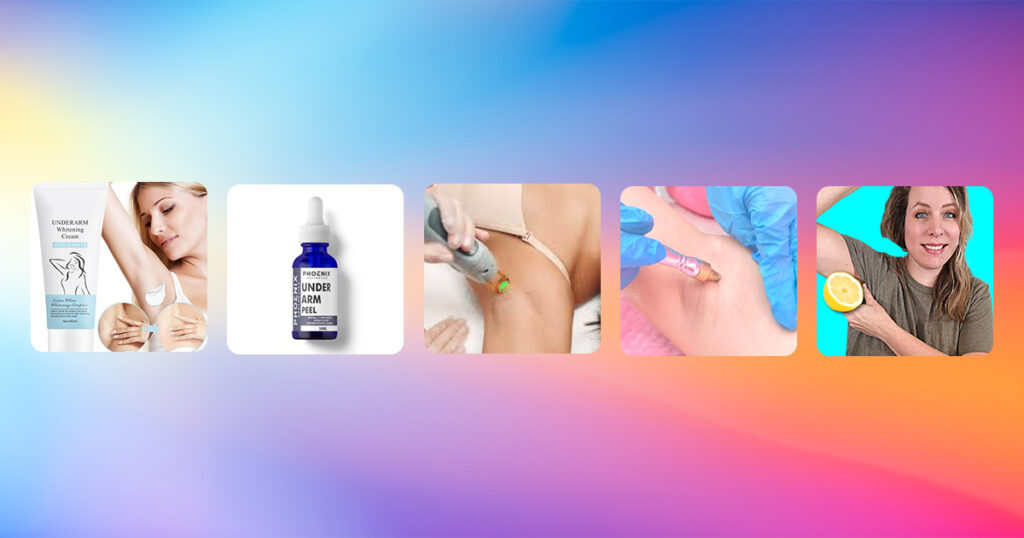
When to Seek Professional Help for Dark Underarms
Dark underarms are usually harmless. However persistent or severe pigmentation may indicate a medical condition, such as acanthosis nigricans, which requires professional treatment. And if home or over-the-counter treatments don’t work after several months? A dermatologist should be consulted. Signs that may warrant medical evaluation include:
a. The skin quickly turns black.
b. Thickening of theskin in the affected area
c. The dark mark extended beyond his lower arm.
d. Itching, pain, odor, and other symptoms related
Why Choose Dr. Hanan for Dark Underarm Treatment
Dr. Hanan’s expertise in dermatology and personalized care make him an excellent choice for treating dark underarms. Here’s why:
1. Expertise in Skin Pigmentation: With extensive experience in pigmentation treatments, Dr. Hanan tailors solutions to your skin type for optimal results.
2. Advanced Treatment Options: Equipped with state-of-the-art technology, Dr. Hanan offers proven methods like laser therapy, chemical peels, and microdermabrasion to effectively reduce darkening.
3. Safe and Effective Care: Dr. Hanan uses only dermatologist-approved techniques, prioritizing patient safety with each treatment plan.
4. Patient-Centered Support: Known for his compassionate approach, Dr. Hanan and his team provide thorough support to ensure comfort and confidence in your treatment journey.
Trust Dr. Hanan for effective, safe dark underarm treatment and achieve smoother, more even-toned skin tailored to your unique needs.
Final Thoughts
Dark underarms, while often benign, can be managed effectively with preventive measures, over-the-counter products, and professional treatments. A combination of good hygiene practices, gentle hair removal, and skin-friendly products can go a long way in preventing and reducing underarm pigmentation. However, for those seeking faster and more reliable results, consulting a dermatologist to explore treatments like chemical peels, lasers, or microdermabrasion is advisable.
Taking proactive steps to care for underarm skin can lead to a smoother, more even skin tone, helping you feel more confident and comfortable in any outfit.
FAQ’S
Dark underarms can result from shaving, friction, dead skin build-up, certain deodorants, and conditions like hyperpigmentation.
Prevent darkening by avoiding shaving, wearing loose clothing, exfoliating, and using natural deodorants.
Treatments include topical creams (kojic acid, niacinamide), chemical peels, and laser therapy. A dermatologist can recommend the best option.
Table of Contents
Skincare Routine for Men: A Guide to Healthy Skin
Skincare Routine for Men: A Guide to Healthy Skin
Discover an easy-to-follow skincare routine for men that ensures clear, healthy skin. Get tips for cleansing, moisturizing, and more.
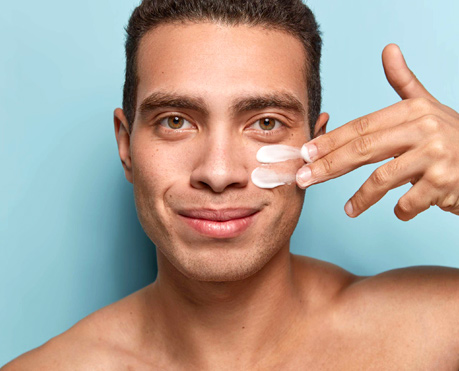
When it comes to maintaining a fresh and youthful appearance, skincare should be a priority for everyone, regardless of gender. However, men’s skincare often takes a backseat, leading to premature aging, dryness, and other skin concerns.
Men’s skin, due to its unique characteristics—thicker texture, larger pores, and increased oil production—requires a customized routine that addresses specific issues.
In this article, we’ll break down the essential steps in a skincare routine tailored specifically for men, ensuring that your skin looks its best.
Why Men Need a Skincare Routine
Men’s skin is biologically different from women’s and requires special care. This is due to higher testosterone levels, Men tend to produce more oil and have thicker skin and more clogged pores.
So, a proper skincare routine not only prevents breakouts and irritation. But it also helps fight signs of aging. Including wrinkles and fine lines. Investing time in skin care will lead to radiant skin, smoother, and increased confidence.
Step 1: Cleansing – The Foundation of Any Routine
Cleansing is the cornerstone of any good skin care plan. Men have larger pores. This allows more dirt and oil to accumulate.
It’s important to use a gentle facial cleanser to remove impurities without stripping essential oils from the skin. Choose the right cleanser for your skin type:
a. Oily skin: Choose a foam or gel cleanser that controls excess oil.
b. Dry skin: Moisturizing cleansers with ingredients like hyaluronic acid or glycerin are best.
c. Sensitive Skin: Use a gentle, fragrance-free formula that won’t irritate.
Cleaning twice a day Morning and before bed is the key to removing dirt, sweat, and sebum that accumulates throughout the day.
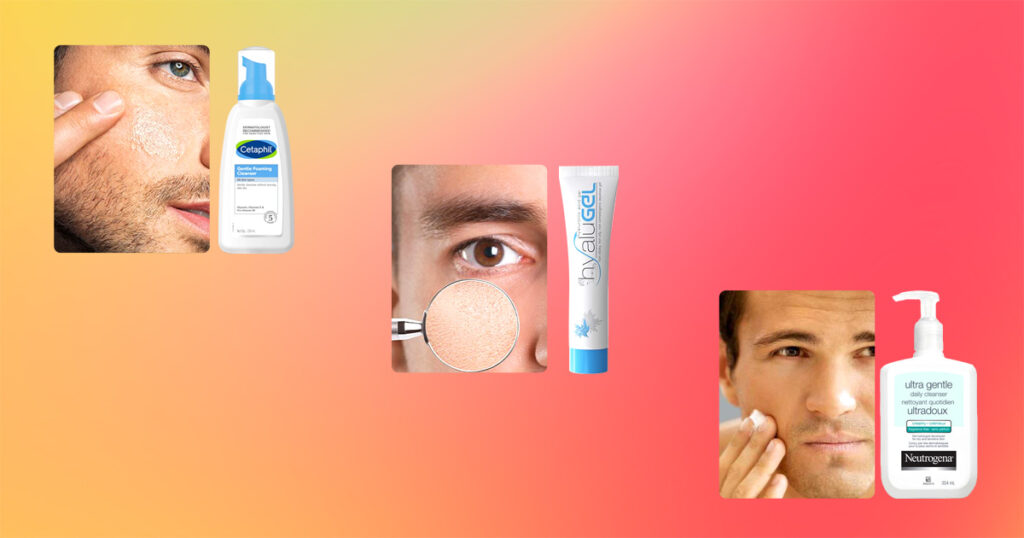
Step 2: Exfoliation – Remove Dead Skin Cells
Exfoliating helps remove dead skin cells. Helps new skin reveal the skin. Makes your skin smooth and radiant. Men will benefit from regular shaving as it prevents ingrown hairs and keeps hair follicles from falling out. However, over-shaving can cause irritation. Therefore, water should be exfoliated 2-3 times a week.
Use a gentle scrub or chemical exfoliator that contains ingredients like salicylic acid or alpha hydroxy acids (AHA). These ingredients penetrate deep into the skin to unclog pores. Shrink pores, prevent acne and remove dead cells. Focus on your T-zone, which tends to have the highest oil production.
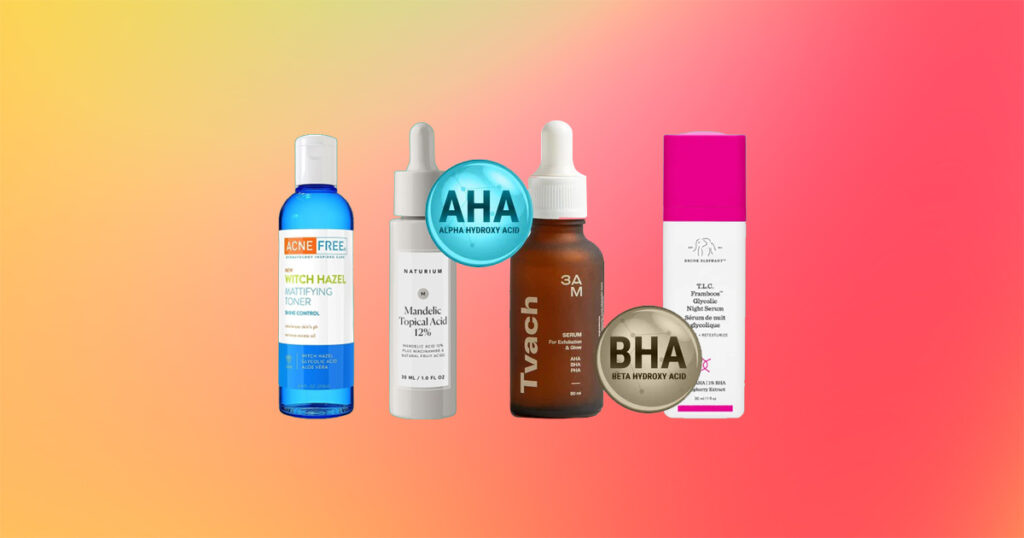
Step 3: Moisturizing – Lock in Hydration
After cleaning the skin It is important to exfoliate and rehydrate the skin. Moisturizers will disturb the skin. Retain moisture and make your skin smooth and healthy. Choosing the right moisturizer for men depends on their skin type:
a. Oily skin: Choose a non-oil or gel moisturizer that hydrates without adding shine.
b. Dry Skin: Enriched with ingredients like ceramides and shea butter. The creamy formula nourishes and repairs dry and flaky skin.
c. Normal/combination skin: A light lotion or cream will balance this without being too greasy.
Use moisturizer twice a day to maintain skin elasticity and reduce the appearance of wrinkles.
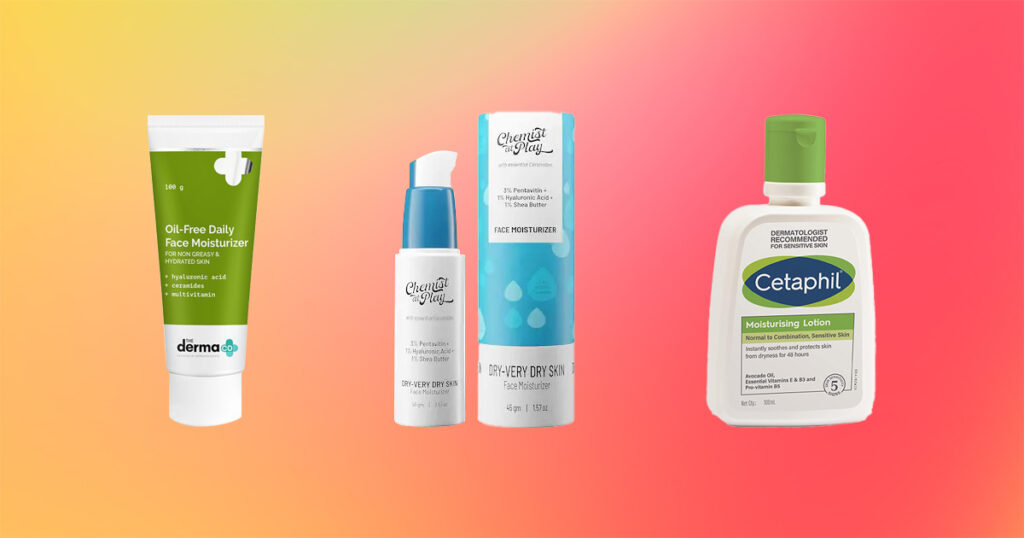
Step 4: Sun Protection – Shield from Harmful UV Rays
One of the most important, yet often neglected, steps in any skincare routine is sun protection. UV rays are a leading cause of premature aging, dark spots, and even skin cancer. Applying a broad-spectrum sunscreen with an SPF of at least 30 should be a non-negotiable step in your morning routine. Even on cloudy days or during winter, UV rays can penetrate the skin, leading to long-term damage.
Choose a lightweight sunscreen that won’t clog your pores or leave a greasy residue. For those with oily or acne-prone skin, opt for an oil-free formula. Many moisturizers come with built-in SPF, making it easy to incorporate into your routine.
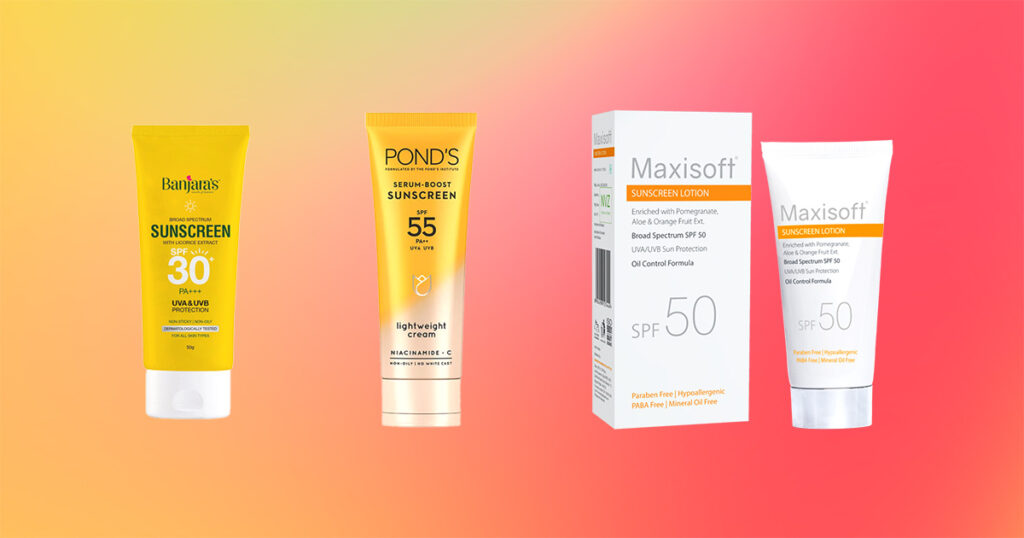
Step 5: Targeted Treatments – Address Specific Skin Concerns
Everyone’s skin is unique. And sometimes your skin needs extra care. Whether you’re battling acne, hyperpigmentation, or wrinkles, integrating targeted treatments into your daily routine can dramatically improve your skin’s health.
a. For acne: Products containing benzoyl peroxide or salicylic acid help clear scars and prevent future breakouts.
b. For hyperpigmentation: Look for treatments that contain vitamin C, niacinamide, or retinol to reduce dark spots and even out skin tone.
c. For anti-aging: Products containing retinoids, peptides, or collagen can be used to reduce the appearance of fine lines and wrinkles, making the skin look younger.
Use these treatments after cleansing and before moisturizing. so that the active ingredients can be fully absorbed into your skin
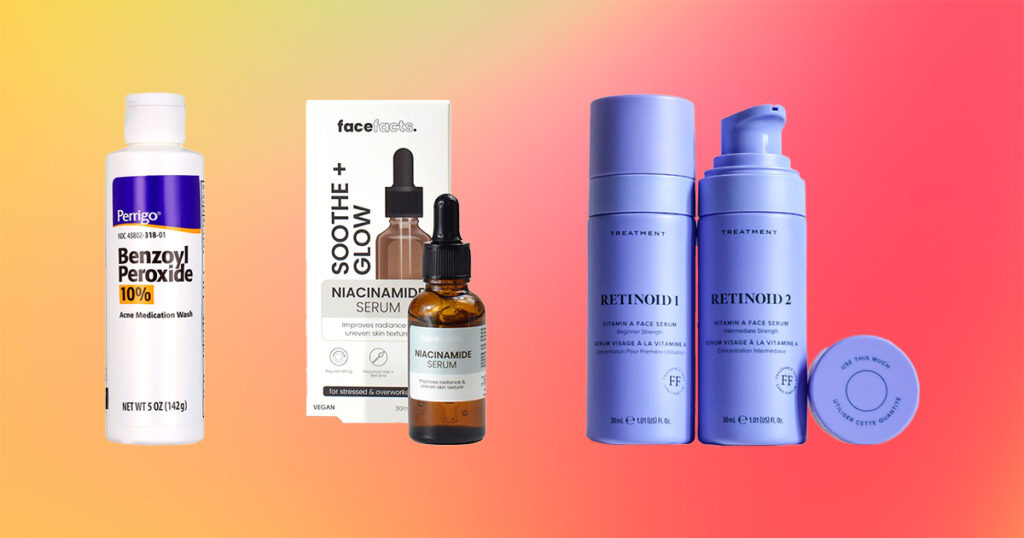
Step 6: Eye Cream – Tackle Dark Circles and Puffiness
The skin around the eyes is delicate and often shows signs of aging, such as dark circles, puffiness, and wrinkles. A good eye cream targets these concerns. Providing hydrating and firming benefits, ingredients such as caffeine, hyaluronic acid, and peptides are especially effective at brightening the under-eye area and reducing puffiness.
Use your ring finger to apply a small amount of eye cream, patting gently around the bone to avoid pulling on the delicate skin.

Step 7: Night-Time Routine – Repair While You Sleep
At night, your skin goes into repair mode, making it the perfect time to apply more potent treatments. After cleansing and moisturizing, consider incorporating a night cream or overnight mask that’s richer and more nourishing than your daytime products.
Products containing retinol or hyaluronic acid can help repair damaged skin and boost collagen production, leaving you with smoother, firmer skin by morning.
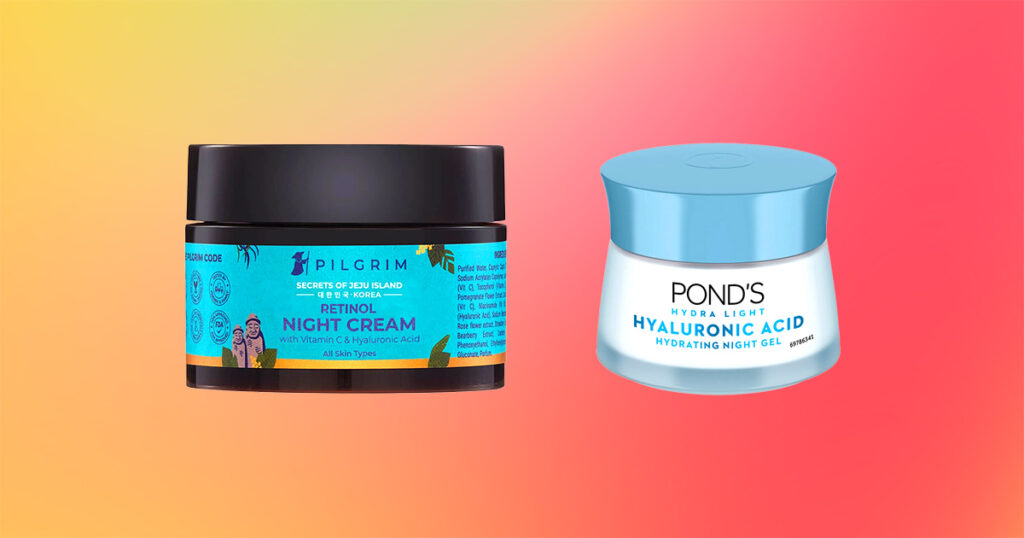
Why Choose Dr. Hanan for the Best Skincare Routine for Men
When it comes to developing an effective skincare routine for men, Dr. Hanan stands out as a trusted expert. Here’s why you should choose Dr. Hanan for your skincare needs:
1. Specialized Expertise
Dr. Hanan understands that men’s skin has unique characteristics, such as increased oiliness and thicker texture. With extensive experience in male skincare, Dr. Hanan tailors treatments to address issues like acne, oil control, and aging.
2. Customized Solutions
Recognizing that every man’s skin is different, Dr. Hanan offers personalized skincare regimens tailored to your specific skin type and concerns, ensuring effective results.
3. Advanced Technology
Utilizing the latest skincare technology and medical-grade products, Dr. Hanan incorporates innovative solutions, including chemical peels and laser therapies, for optimal skin health.
4. Comprehensive Care
From managing acne to reducing hyperpigmentation, Dr. Hanan provides a wide range of treatments, ensuring every aspect of your skincare routine is covered.
5. Holistic Approach
Dr. Hanan promotes a holistic approach to skincare, offering advice on lifestyle habits, diet, and sun protection to enhance your skin’s health.
6. Trusted by Male Clients
With a solid reputation and numerous satisfied clients, Dr. Hanan is recognized for delivering exceptional, tailored care for men’s skincare needs.
For men seeking effective skincare, Dr. Hanan offers expert guidance and personalized treatments to help you achieve your best skin.
Additional Tips for Men’s Skincare
1. Shaving with Care: Use a sharp razor and shaving cream to avoid irritation and ingrown hairs. Always follow up with a soothing aftershave or balm to calm the skin.
2. Hydration: Drinking plenty of water helps keep your skin hydrated from the inside out.
3. Diet: A diet rich in antioxidants, vitamins, and healthy fats can improve skin quality. Foods like leafy greens, nuts, and fatty fish are great for boosting skin health.
Conclusion
Skincare doesn’t have to be complicated. Following this comprehensive skincare routine Men can enjoy brighter, smoother, and healthier skin. With the right products and regular care, you will notice less acne. less irritation and look more youthful. Make these steps a part of your daily diet. And your skin will thank you in the long run.
FAQ’S
A simple routine includes cleansing, moisturizing, and applying sunscreen daily.
Exfoliate 2-3 times a week to remove dead skin cells and prevent clogged pores.
Yes, using sunscreen daily protects the skin from sun damage and aging.

